by Rachel Parkes (Hydrogen Insight) Company reportedly still committed to using renewable H2 to decarbonise Puertollano refinery -- Spanish oil company Repsol has reportedly scrapped plans to build an up-to-200MW green hydrogen project in the city of Puertollano, Spain, after feasibility studies
Trump Admin Advances Climate Reg Overhaul
by Sean Reilly (Politico Pro Climatewire) The move opens the door to revise a suite of rules clamping down on heat-trapping emissions, especially from the industrial and transportation sectors. -- EPA has taken its first public step toward revisiting the landmark 2009 determination that underpins most of the agency's climate regulations.
The move marks an introductory and pivotal step for the Trump administration to rewrite the foundation of a suite of rules that aim to clamp down on heat-trapping emissions, especially from the industrial and transportation sectors.
EPA on Monday sent the proposed rule, titled “Greenhouse Gas Endangerment Finding and Motor Vehicle Reconsideration,” to the White House regulations office for a routine review, according to a notice posted on a government tracking website.
While the proposal’s contents were not made public, EPA Administrator Lee Zeldin had targeted the endangerment finding in a list of planned regulatory rollbacks released in March.
At a congressional hearing in May, he suggested that the original Obama-era finding was flawed because it failed to consider the harm done by each of the half-dozen greenhouse gases deemed dangerous because they contribute to global climate change. READ MORE
- EPA’s Endangerment Finding in Danger? (Aiken Gump)
- The Bottom Line: Regulatory Costs Don’t Belong in Endangerment Findings: How the Clean Air Act Separates Regulatory Cost Analysis from Endangerment Findings (Policy Integrity)
-
Pending EO 12866 Regulatory Review RIN: 2060-AW71 Title: Greenhouse Gas Endangerment Finding and Motor Vehicle Reconsideration Rule (Office of Management and Budget)
-
Endangerment and Cause or Contribute Findings for Greenhouse Gases Under Section 202(a) of the Clean Air Act (Environmental Protection Agency)
-
Attribution Science and EPA’s Reconsideration of the GHG Endangerment Finding (Climate Law Columbia University)
-
Trump EPA Kicks Off Formal Reconsideration of Endangerment Finding with Agency Partners (Environmental Protection Agency)
-
9 Questions About the 2009 Endangerment Finding Reconsideration (Baker Botts)
-
EPA to Revisit Greenhouse Gas Endangerment Finding (Congress.gov)
-
Trump EPA Kicks Off Formal Reconsideration of Endangerment Finding with Agency Partners (Environmental Protection Agency)
-
EPA Sends Combined GHG Finding, Vehicle Rule Rollbacks To OMB (Inside EPA)
Excerpt from Aiken Gump: EPA faces scientific and legal barriers to challenging the endangerment finding.
First, scientific data on the impacts of GHGs on climate change has only increased since the original 2009 finding. Scientists can more readily link impacts attributable to anthropogenic climate change and the relative contributions of different sources for those impacts, undermining arguments that emissions reductions in one jurisdiction will not meaningfully “contribute” to addressing global climate change.9
Second, any decision against the findings would be immediately challenged in court. The findings have been upheld against various legal challenges over the years, with the Supreme Court declining to hear challenges to it as recently as December 11, 2023.10
Nevertheless, recent landmark decisions in the Supreme Court have demonstrated a willingness to deviate from precedent in matters of environmental regulations and otherwise. If challenged, these potential legal proceedings will present opportunities for engagement for environmental and industry groups to file amicus briefs or join likely challenges from Democratic states. READ MORE
Excerpt from Policy Integrity: EPA made the 2009 Endangerment Finding following the Supreme Court’s determinations that greenhouse gases are “air pollutants” under the Clean Air Act. The Supreme Court further clarified that “[i]f EPA makes a finding of endangerment, the Clean Air Act requires the agency to regulate emissions of the deleterious pollutant from new motor vehicles.” Consistent with this obligation, after making the 2009 Endangerment Finding, EPA then proceeded to issue regulations to limit greenhouse gas emissions from vehicles, and later from power plants, landfills, aircraft, and the oil and gas sector. Many of EPA’s greenhouse gas regulations, alongside the 2009 Endangerment Finding itself, are now in the crosshairs of EPA’s reconsideration.
EPA’s March 2025 press release emphasized that when EPA made the Endangerment Finding in 2009, the agency did not consider the costs of future regulations that would limit emissions. That’s true—but it is not evidence that regulatory costs went unconsidered. To the contrary, EPA considered regulatory costs when the relevant statutory provisions indicated they should be considered: at the time it issued the various regulations limiting greenhouse gas emissions from particular sectors. As explained in this issue brief, this approach is required by the law and best practice.
The Clean Air Act requires EPA to assess regulatory costs when setting emission standards, not when making an endangerment finding that underlies the regulations. Under the Clean Air Act, EPA first makes a scientific judgment regarding whether certain emissions “endanger public health or welfare” (a.k.a., an endangerment finding). For emissions meeting that criterion, EPA then separately issues emission standards. The courts have made clear that cost is considered only at the stage of issuing specific standards to limit emissions. The plain text of the Clean Air Act compels this approach, and Supreme Court case law further affirms this understanding of the text and appropriate practice. READ MORE
Excerpt from Politico Pro: The EPA’s proposal to reconsider its 16-year-old bedrock finding on the dangers of greenhouse gases is now in the White House’s hands — a move that sets the stage for a broad attack on a wide range of federal climate regulations.
Details on the proposal are still unclear, but it is expected to significantly weaken — if not revoke outright — the agency’s 2009 declaration that greenhouse gases endanger human health. That in turn would free EPA from the legal obligation to regulate climate pollution from most sources, including power plants, cars and trucks, and virtually any other source.
The EPA submitted its proposal (Reg. 2060-AW71) to the White House Office of Information and Regulatory Affairs for review on Monday, according to the agency’s website.
The rule is styled as "Greenhouse Gas Endangerment Finding and Motor Vehicle Reconsideration Rule" — indicating it may revoke the agency's tailpipe emissions standards for vehicles at the same time it undoes the endangerment finding. That would free automakers from having to comply with Biden-era rules that Republicans have argued amounted to a de facto electric vehicle mandate. Restoring auto industry jobs through deregulation is a main pillar of Administrator Lee Zeldin's EPA agenda . READ MORE
Excerpt from Inside EPA: EPA has sent to the White House for final review a proposed rule walking back the landmark GHG endangerment finding and vehicle emissions standards -- confirming expectations that the agency would combine its endangerment finding reconsideration with a vehicle rule repeal even as the regulation’s exact scope remains unclear. The Office of Management and Budget (OMB) received the proposal, titled “Greenhouse Gas Endangerment Finding and Motor Vehicle Reconsideration Rule,” on June 30. EPA’s planned rollback of the greenhouse gas endangerment... READ MORE
The Big Beautiful Bill: Biofuels Win Big as Clean Energy Fractures
by Jim Lane (Biofuels Digest) Senate passage sets the stage for House vote, reshaping renewable incentives along partisan and regional lines -- ... For biofuels, the bill could not have come at a more pivotal moment. With production slowed by policy uncertainty, and the sector waiting for clarity on tax credits and market signals, industry groups say the legislation provides the most significant boost in years. Among other provisions, it extends the 45Z Clean Fuel Production Tax Credit through 2029, revives the Small Agri-Biodiesel Producer Credit at 20 cents per gallon, and maintains the transferability rules that make the credits usable for producers without large tax liabilities.
“This policy comes at a critical time for American agriculture,” said Joshua Shields, senior vice president at POET, the world’s largest biofuels producer. “An extended window for 45Z gives us greater certainty to invest in new technologies and practices that are pivotal to strengthening markets for farmers and ensuring American biofuels energy dominance.”
Grant Kimberley, executive director of the Iowa Biodiesel Board, echoed that optimism. “These improvements to the biomass-based diesel tax incentive come at a pivotal moment for the industry, which has seen months of uncertainty, stalled production and investment hesitation,” Kimberley said. He credited Iowa Senators Chuck Grassley and Joni Ernst for championing the provisions. “This gives us much-needed certainty for the near future.”
Biofuels in, Solar Out
But while renewable fuels secured new guarantees, other clean energy sectors saw incentives scaled back or ended outright.
...
Representative John Garamendi (D-CA) called it “the largest transfer of wealth from working Americans in U.S. history,” arguing that the bill “kills medical services for 16 million people” and “slashes clean energy tax credits” to fund sweeping tax reductions that disproportionately benefit wealthier households. “Not only is Trump slashing the social safety net, he’s going after our power grid too,” Garamendi said in a statement, warning of higher energy costs and potential blackouts as solar and wind incentives expire.
...
Biofuels, rooted in farm states and rural economies, retain deep bipartisan appeal—particularly among Republicans eager to deliver for agriculture and domestic fuel producers. By contrast, solar, wind, and electric vehicles are often associated with urban corridors, technology companies, and policies championed by Democrats in states like California and New York.
...
Senators Rand Paul (R-KY), Thom Tillis (R-NC), and Susan Collins (R-ME) joined all Democrats in voting no, citing concerns over the legislation’s fiscal impact and Medicaid cuts.
...
Critics, however, point to estimates that the legislation will increase deficits by over $3 trillion over the next decade. Among them was entrepreneur Elon Musk, who tweeted that lawmakers supporting the bill should “hang their head in shame” for advancing what he called the biggest debt increase in American history.
...
At the same time, the bill imposes new work requirements and eligibility checks for Medicaid and nutrition assistance programs. Nonpartisan analysts estimate nearly 16 million Americans could lose health coverage as a result. Democrats described the cuts as unprecedented, with Garamendi warning that a typical 60-year-old California couple could see their insurance costs rise by over $22,000 per year.
For renewable fuels producers, however, the legislation represents a measure of stability after years of policy volatility. The Advanced Biofuels Association offered qualified support, praising the biofuels provisions but warning that restrictions on foreign feedstocks could raise costs.
...
The legislation’s focus on domestic supply chains also has implications for feedstock sourcing. While many new projects producing renewable diesel and sustainable aviation fuel rely on imported waste oils—especially used cooking oil from China—the most abundant, affordable U.S. feedstocks are agricultural and forest residues. Proponents argue that prioritizing domestic materials strengthens energy security and rural economies, though some producers warn it could limit growth by narrowing the feedstock pool at a time of rising demand.
...
Biofuels, with their links to agriculture and domestic supply chains, emerged as a clear beneficiary. READ MORE
Related articles
- How the megabill shakes up fossil fuels, renewables -- The Senate flipped the script on how the industries were taxed during the Biden administration. (Politico Pro Energywire)
- Johnson, Trump push wary House Republicans for July 4 passage: A cross-section of GOP lawmakers is skeptical of the Senate package and wants to take their time (Politico Pro E&E Daily)
- Iowa Biodiesel Board applauds Senate extension and clarification of biodiesel tax incentive (KXEL)
- Opinion: The future of biofuels can be made in America, if Congress wants it (Tamra Spielvogel/Agri-Pulse)
- Trump's budget bill boosts fossil fuels, hits renewable energy (Reuters)
- RFA Applauds Passage of OBBBA, Tax Policy Clarity for U.S. Ethanol Producers (Renewable Fuels Association)
- ACE Applauds Inclusion of Clean Fuel Production Credit (45Z) in Final Tax and Spending Package (American Coalition for Ethanol)
- AFCC Applauds Renewable Sustainable Provisions in President Trump’s One Big Beautiful Bill Act (OBBBA (Alternative Fuels and Chemicals Coalition)
- Secretary Rollins Praises President Trump’s One Big Beautiful Bill (U.S. Department of Agriculture)
- US biofuel, farmer groups celebrate passing of Trump's budget bill (S&P Global)
- Ethanol Blog: Ag, Biofuels Laud House-Passed Big, Beautiful Bill's 45Z Clean Fuels Production Tax Credit Modifications (DTN Progressive Farmer)
- DTN Ag Policy Blog -- President Points to Wins for Farmers, Historic Tax Cuts at America250 Rally in Iowa (DTN Progressive Farmer)
- How the G.O.P. Bill Will Reshape America’s Energy Landscape: Here’s a rundown on the winners and losers in the legislation muscled through Congress. (New York Times)
- Big Beautiful Bill Boosts Biodiesel (Energy.AgWired.com)
- How Big and Beautiful is the One Big Beautiful Bill? Defossilistas spar over measures, consequences (Biofuels Digest)
Excerpt from Politico Pro Energywire: The fossil fuel sector is taking a victory lap following Senate passage Tuesday of high-profile legislation that also doubled down on Republican plans to slash clean energy tax breaks.
“This historic legislation will help usher in a new era of energy dominance by unlocking opportunities for investment, opening lease sales and expanding access to oil and natural gas development,” American Petroleum Institute President Mike Sommers said in a statement after the Senate passage. “We will continue to work with policymakers to get this final package to President Trump’s desk.”
The bill was revised just before passage to remove an excise tax on wind and solar projects and ease the timeline for phasing out credits for those industries, but clean energy advocates found little to cheer about.
"Despite limited improvements, this legislation undermines the very foundation of America’s manufacturing comeback and global energy leadership. If this bill becomes law, families will face higher electric bills, factories will shut down, Americans will lose their jobs, and our electric grid will grow weaker," said Abigail Ross Hopper, president of the Solar Energy Industries Association. READ MORE
Excerpt from Politico Pro E&E News: From fiscal hawks to vulnerable centrists worried about the Senate’s steeper Medicaid cuts, a substantial cross-section of the House GOP conference would rather take the time to amend the package and send it back to the Senate.
Head GOP rebel Chip Roy of Texas said Tuesday the chances of passing a bill out of the House by that deadline are “a hell of a lot lower than they were even 48 hours ago” based on what he saw of the Senate bill.
And, for now, some are openly questioning Trump’s push to “GET IT DONE” by July 4. READ MORE
Excerpt from Renewable Fuels Association: With today’s (July 3, 2025) passage of the One Big Beautiful Bill Act, the Renewable Fuels Association applauded the inclusion of several key tax provisions that will enhance the role of the U.S. ethanol industry in contributing to American energy security and innovation.
“From the very beginning of the budget reconciliation process, our goal was to advocate for the inclusion of tax policies that provide certainty, growth opportunities, and market stability for U.S. ethanol producers. The One Big Beautiful Bill Act passed today accomplishes that objective. We thank the many renewable fuel supporters in Congress and President Trump for ensuring American ethanol producers and farmers had a voice and seat at the table in this process,” said Geoff Cooper, RFA President and CEO. “The extension and modifications to the 45Z clean fuel production credit, reinstatement of the Research and Development immediate expensing provisions, and improvement of the 45Q carbon sequestration and utilization credit will provide a growth-oriented tax policy climate that ethanol producers can count on, improving the role that renewable fuels can play in helping reach our nation’s energy independence goals.”
Specifically, the OBBBA includes the following improvements to the 45Z Clean Fuel tax provision:
- Extends 45Z by two years, to the end of 2029.
- Restricts eligibility for 45Z to fuels made from feedstocks grown in the U.S., Canada, and Mexico.
- Retains full transferability throughout the term of the 45Z credit.
- Harmonizes indirect land use change emissions with actual data and evidence, resulting in zero ILUC penalty for corn ethanol.
Other key ethanol-related provisions in the budget reconciliation package include:
- Retains key enhancements to 45Q previously made in the Inflation Reduction Act and allows other carbon uses like enhanced oil recovery to qualify for equal credit values.
- Reinstates RD/RE immediate expensing provision that expired in 2022 under the Tax Cuts and Jobs Act.
“With budget reconciliation now in the rearview mirror, RFA, along with Congress and the Trump Administration, can now turn our attention to other key priorities to U.S. ethanol producers, such as legislation allowing for year-round E15 along with boosting the role of renewable fuels through robust renewable volume obligations under the RFS and a judicious resolution to the mounting number of pending Small Refinery Exemption petitions,” said Cooper. READ MORE
Excerpt from American Coalition for Ethanol: The American Coalition for Ethanol (ACE) today praised the inclusion and extension of the Clean Fuel Production Credit—commonly referred to as Section 45Z—in the final tax and spending package passed by Congress and headed to President Trump’s desk. ACE CEO Brian Jennings issued the following statement:
“We’re grateful to our Congressional champions for their steadfast leadership to support and strengthen the 45Z credit, which is remarkable considering the fact most other IRA-era tax credits were limited or phased-out in the final package. While there were other improvements we had hoped to achieve in the final 45Z language, restoring transferability of the credit, removing indirect land use change (ILUC) penalties, and restricting feedstock eligibility to USMCA countries will strengthen the credit from its original version.”
“In terms of the credit term, we preferred the House language which would have extended 45Z through 2031, and we also urged Congress to specifically allow low-carbon farming practices to be monetized through 45Z with the feedstock calculator and guidelines USDA has released, but nevertheless ACE remains committed to working with federal agencies to implement the credit in ways that reward on-farm conservation practices and accelerate the use of homegrown, low-carbon biofuels.”
ACE has been working to help monetize low-carbon farming practices in 45Z through their 10-State USDA Regional Conservation Partnership Program (RCPP). Once farmers participating in the project have implemented reduced-till, 4R nutrient management, or cover crops, land-grant university scientists will collect soil samples and other field-level data about the resulting carbon benefits to better calibrate the GREET model and the USDA FDCIC to generate more reliable carbon scores for farming practices. Running the data through these models solves for ‘information gaps’ which currently prevent farmers and ethanol producers from monetizing ag practices in 45Z and through regulated fuel markets.
The ACE RCPP is the key to unlock 45Z to allow ethanol producers to generate and benefit from low-carbon farming practices.
The 45Z credit, originally enacted under the Inflation Reduction Act, provides technology-neutral incentives for clean fuels based on lifecycle greenhouse gas emissions. The final version extends the 45Z credit through the end of 2029—two years beyond its current expiration date of Dec. 31, 2027. It also limits eligibility to fuels made from feedstocks produced or grown in the U.S., Mexico, or Canada, and revises how lifecycle GHG emissions are calculated by excluding emissions from indirect land use change (ILUC). READ MORE
Excerpt from Alternative Fuels and Chemicals Coalition: The Alternative Fuels and Chemicals Coalition (AFCC) Executive Vice President Rina Singh released the following statement after President Trump signed the One Big Beautiful Bill Act into law:
“AFCC applauds the enactment of the One Big Beautiful Bill Act (OBBBA) today (July 4, 2025) – the Act contains several provisions which will advance our sector and strengthen our national energy dominance. The ACT includes tax incentives for clean fuel production, hydrogen, carbon capture and sequestration, and electricity. Preserving feedstock eligibility and animal manure provision. The Act carries President Trump’s signature for growing it here, building it here, and selling it here which he ran on during his campaign. This provides huge investment opportunities and stability for producers and developers, allowing projects to move forward. DOE Loan Program Office received funding, transferability and sales provisions were preserved.”
“Alternative Fuels and Chemicals Coalition (AFCC) looks forward to the implementation for OBBBA and working with federal agencies and policymakers."
About the Alternative Fuels and Chemicals Coalition (AFCC): Advocating for Public Policies to Promote the Development and Production of Alternative Fuels, Renewable Chemicals, Biobased Products, and Sustainable Synthetic Aviation Fuels. READ MORE
Excerpt from U.S. Department of Agriculture: “It puts American Farmers First by preventing countries such as China and Brazil from flooding our markets with biofuel feedstocks that compete with American grown soy, milo, and corn. It extends the 45Z clean fuel tax credit to enhance our domestic energy security. READ MORE
Excerpt from S&P Global: The bill extends 45Z credits by two years, restricts the eligibility of these credits to fuels made from feedstocks grown in the US, Canada or Mexico, retains full transferability throughout the term without large tax liabilities and excludes indirect land use change in calculating lifecycle GHG emissions, which would result in no land use change penalty for corn ethanol.
...
ACE has been working to help monetize low-carbon farming practices in 45Z through their 10-State USDA Regional Conservation Partnership Program (RCPP).
Once farmers participating in the project have implemented reduced-till, 4R nutrient management, or cover crops, land-grant university scientists will collect soil samples and other field-level data about the resulting carbon benefits to better calibrate the GREET model and the USDA FDCIC to generate more reliable carbon scores for farming practices.
The 45Z credit, originally enacted under the Inflation Reduction Act, provides technology-neutral incentives for clean fuels based on lifecycle greenhouse gas emissions.
...
The National Oilseed Processors Association and American Soybean Association, which represent US soybean, canola, flaxseed, safflower seed and sunflower seed crushing industries, praised the final passage of the bill, saying the reforms in the legislation represent a major win for the US oilseed processing industry and American farmers.
The new legislation caps 45Z credits at $1/gal (including for sustainable aviation fuel) except in the case of fuel produced from animal manure.
The new bill has delivered "generational wins," the Iowa Soybean Association said on July 3, citing the extension of 45Z credits and increased Small Biodiesel Producer Credit to 20 cents/gal.
...
These changes provide some additional stability for the renewable fuels market generally but will cause some disruption in the sustainable aviation fuel and imported feedstock markets, analysts say.
The loss of tax credits for this feedstock will push UCO trade flows towards the EU, according to a Commodity Insights report on advanced biofuels in June.
According to the report, the new regime will tighten supplies and drive up costs as it will not be possible to sustain demand with domestic feedstocks alone. READ MORE
Excerpt from DTN Progressive Farmer: Jennings (American Coalition for Ethanol CEO Brian Jennings) said although ACE had preferred a 45Z extension through 2031 as well as language to allow farmers to profit from low-carbon farming practices.
...
"Nevertheless, ACE remains committed to working with federal agencies to implement the credit in ways that reward on-farm conservation practices and accelerate the use of homegrown, low-carbon biofuels," he said.
Monte Shaw, executive director of the Iowa Renewable Fuels Association, said the renewable fuels community "worked hard" on the legislation.
"IRFA members are excited by the extension of 45Z through 2029," he said. "Countries around the world and many of our states are demanding ultra-low carbon fuels. The Big Beautiful Bill helps pave the way for the investments to produce those fuels -- and to produce them from North America feedstocks. IRFA thanks Iowa's Senators and House members who worked so tirelessly to ensure 45Z was included and improved during this process."
The bill also includes provisions that are expected to boost biomass-based diesel.
"Led by Sen. Chuck Grassley, the final bill includes a restoration of the small biodiesel producer tax credit for 2025 and 2026," Shaw said.
"We are hopeful this provision, along with the robust RFS blending levels proposed by President Trump's EPA, will be enough to get our biodiesel plants running again."
The bill also lowered the incentive for producing sustainable aviation fuel from $1.75 to $1 and made technical changes that biofuels groups said could make it difficult for a SAF producer using ethanol as their feedstock to claim the credit.
American Soybean Association President and Kentucky farmer Caleb Ragland, said in a statement the bill comes at a time when agriculture needs a boost.
"At a time of great uncertainty for the agriculture economy, the support of Congress to enhance key programs and vital domestic markets for our farmers is critical," he said. READ MORE
Excerpt from New York Times: Winner: Biofuels
Some technologies got a boost in the bill. A tax credit for so-called “clean fuels” like ethanol was extended for another two years, through the end of 2029. The bill also makes it easier for biofuels made from crops like corn to qualify, by easing emissions rules.
Critics of this provision have argued that while some biofuels could be useful for limiting climate change, such as certain sustainable aviation fuels, the current tax credit often subsidizes fuels that do little to cut planet-warming emissions. Yet the credit is popular with Republicans who represent farm states like Iowa and Nebraska.
...
Possible winner: Hydrogen
Senate Republicans made a last-minute tweak that partially salvaged a lucrative tax credit for companies that make clean hydrogen fuels. The credit will now be available through the end of 2027 instead of being phased out this year, as House Republicans had proposed. (Previously, it was expected to last until 2033.)
When burned, hydrogen emits mainly water vapor, and it could be used instead of fossil fuels to make steel or fertilizer or to power ships. But most current hydrogen is produced from fossil fuels in a dirty process, and very little so-called “clean” hydrogen exists today.
Hydrogen companies praised senators for not abruptly ending the credit, though projects still face headwinds. The fact that wind and solar power will become more expensive could make it harder to produce renewable hydrogen. Some lawmakers also fear that the Trump administration could revoke $8 billion in Biden-era funding that created regional hubs around the country for the production, storage and transportation of clean hydrogen.
...
Winner: Fossil fuels
Mr. Trump came into office promising to expand the production and use of oil, gas and coal, the burning of which is heating the planet. In ways large and small, the bill achieves that.
The legislation mandates oil and gas lease sales in Alaska, the Gulf of Mexico and the American West. It lowers the royalty rates that coal companies pay to mine on federal lands. It provides additional tax breaks to oil and gas producers for “intangible drilling and development costs.” And it delays for 10 years a hefty fee on oil and gas companies that leak methane, a potent greenhouse gas, from their operations.
In a surprising last-minute change, Senate Republicans added a 2.5 percent tax break for U.S. production of metallurgical coal, a form of coal that has been used for decades in steel-making and is mainly exported to countries like India and Brazil.
The bill also increases the value of a tax credit for companies that capture carbon dioxide from smokestacks and inject the gas into oil wells to dislodge more crude, a process known as enhanced oil recovery.
But the rollback of clean energy tax credits will also aid the fossil-fuel industry. Fewer electric cars on the road mean higher gasoline consumption. And fewer wind turbines and solar panels mean that, at the margins, electric utilities will burn more gas and coal.
“This historic legislation will help usher in a new era of energy dominance by unlocking opportunities for investment, opening lease sales and expanding access to oil and natural gas development,” said Mike Sommers, the chief executive of the American Petroleum Institute, which represents oil and gas companies. READ MORE
Excerpt from Biofuels Digest: II. The Winners (Or Those Claiming Victory)
A. The Biofuels Industry: The New Industrial Revolution—Or Just New Rhetoric?
Why they see themselves as winners:
Biofuels, biogas, and renewable diesel groups are celebrating OBBBA’s expanded §45Z Clean Fuel Production Credit, transferability provisions, and the removal of indirect land use change penalties. Iowa Biodiesel calls it “a strong signal of stability,” POET calls it “certainty” that “paves the way for long-term growth,” and the American Biogas Council calls it “vital to sustained growth.”
GTESI View: Narrative Compression and Entropy Displacement
These statements exemplify symbolic compression—collapsing complex adaptive challenges (market volatility, feedstock constraints, policy swings) into a simpler storyline: biofuels equal stability. By removing ILUC penalties, they effectively displace entropy onto critics—implying lifecycle emissions uncertainty is an artificial construct imposed by regulators, rather than a real accounting issue.
But measured voices—like the Advanced Biofuels Association—caution that restricting foreign feedstocks may create new fragility. This is a credible admission of structural constraints, a hallmark of a more honest persistence narrative.
B. Fuel Cells: Sharpened Clean Energy
Why they see themselves as winners:
FuelCell Energy’s CEO frames OBBBA as a “landmark,” citing preserved Investment Tax Credits and expanded transferability as essential to U.S. leadership in grid resilience and AI infrastructure.
GTESI View: Strategic Positioning as Essential Persistence Infrastructure
This is a masterclass in symbolic narrative scaling: Fuel cells are not just clean energy; they are the infrastructure backbone of the AI economy. This reframing elevates fuel cells beyond a niche technology, implying they are indispensable to future national resilience.
While this is powerful framing, GTESI suggests the acid test remains: can the sector actually scale at a pace and cost that justifies its rhetorical centrality? So far, it remains an open question whether this narrative will convert into real persistence.
C. Tax Credit Transferability: Financing as Adaptive Glue
Why they see themselves as winners:
Crux and other advocates of transferability see it as a “critical market-based mechanism for unlocking capital,” smoothing adaptive shocks across the clean energy landscape.
GTESI View: Reducing Friction, Increasing System Resilience
Transferability is an example of entropy export in financial systems. By enabling credits to flow to whoever can monetize them most efficiently, it reduces transactional friction and broadens participation. This is one of the least-hyped, most structurally valuable elements of OBBBA—a real lever for persistence rather than just a symbolic gesture.
D. Agriculture: A New Golden Age (With Familiar Politics)
Why they see themselves as winners:
USDA Secretary Rollins hails a “new golden age,” praising tax relief, domestic feedstock prioritization, and a crackdown on SNAP “fraud and waste.”
GTESI View: Over-Selling Adaptive Permanence
This is a classic case of over-selling persistence: the notion that OBBBA locks in prosperity for American agriculture indefinitely. History suggests subsidy-driven booms are adaptive sugar highs—quickly eroded by market volatility and climatic stress. The underlying resilience of farming communities depends on more than tax credits and trade barriers.
III. The Losers (Or Those Voicing Alarm)
A. Environmental NGOs and Mainstream Renewables: “The Worst Environmental Bill”
Why they see themselves as losers:
Groups like NRDC blast OBBBA as a “disaster,” citing phaseouts of solar and wind tax credits and mandated public land leasing for fossil fuel extraction.
GTESI View: From Symbolic Ascendancy to Defensive Persistence
This reaction highlights how quickly a narrative of unstoppable momentum can collapse. Solar and wind advocates spent years framing their sectors as inevitable evolutionary successors to fossil fuels. OBBBA forced a shift: from expansionist optimism to defensive narrative repositioning—portraying themselves as the embattled locus of social and environmental order against resurgent entropy (fossil fuels).
B. EV and Battery Manufacturing: The Rhetoric of Inevitable Momentum
Why they see themselves as partial losers:
ZETA acknowledges “significant harm” but insists their progress is fundamentally driven by unstoppable economic forces and consumer confidence.
GTESI View: A Narrative of Persistence Outrunning Structural Resilience
While the association frames EV adoption as rooted in inherent technological superiority, the data tell a more contingent story:
- Tesla’s entire Q1 2025 profit depended on regulatory credits—highlighting that profitability remains policy-dependent.
- Sales growth has already slowed to single digits, and multiple analyses project a 6–40% decline in penetration by 2030 if credits are withdrawn.
- Falling prices may be less a sign of accelerating adoption than of oversupply meeting tepid consumer demand.
- Regulatory rollbacks (e.g., CAFE standards) are removing pressure on traditional automakers to shift product lines.
This is a classic case of symbolic compression outpacing structural compression—where the narrative of inevitability masks an underlying fragility dependent on sustained subsidy scaffolding.
ZETA’s rhetoric is less an expression of confidence than an effort to preserve the appearance of adaptive permanence, hoping to forestall investor and policy retrenchment.
C. Developers Impacted by Prohibited Foreign Entity Rules
Why they face challenges:
Complex “material assistance” rules and recapture provisions make Chinese supply chain components a liability.
GTESI View: Introduction of Structural Fragility
These rules are a vivid illustration of policy-induced entropy: uncertainty that ripples through financing and deployment, undermining adaptive persistence by making the system more brittle.
Conclusion: A Fractured Energy Future
OBBBA is less a coherent energy strategy than a snapshot of America’s competing narratives of persistence.
- Biofuels and agriculture frame themselves as the stabilizing center of a new industrial order—though their claims often compress real fragility into symbolic certainty.
- Fuel cells and transferability champions argue that hidden infrastructure (finance, hydrogen) are the real engines of adaptability.
- Solar, wind, and environmental groups are forced into defensive postures, recasting themselves as victims of regression rather than pioneers of an inevitable transition.
Even sectors that have delivered genuine cost reductions, like EVs, remain intertwined with subsidy scaffolding and regulatory momentum that can evaporate in a single bill.
GTESI teaches us to be skeptical of any claim that a single policy guarantees adaptive permanence. Persistence emerges from structural alignment with reality, not from rhetoric or tax credits alone.
In this sense, OBBBA is not just a law. It is an experiment in how competing energy visions compete, clash, and sometimes fail to build enduring systems. Whether its promises will stabilize or merely postpone entropy will only be clear in hindsight. READ MORE
QUOTE OF THE WEEK -- Dickon Posnett
If Europe is serious about decarbonizing transport, we should be encouraging more biofuel use, not less. -- Dickon Posnett, President, European Biodiesel Board READ MORE
Gevo sells $22M of “Clean Fuel Production Credits”
by Meghan Sapp (Biofuels Digest) In Colorado, on June 30, 2025, Gevo Intermediate HoldCo, LLC entered into a Tax Credit Transfer Agreement with a transferee bank pursuant to which Transferor agreed to supply “Clean Fuel Production Credits” to Transferee from the production of ethanol
July 08, 2025 Read Full Article
Saudi Arabia’s King Salman Airport Adopts Biodiesel in Construction to Support Net-Zero Goals
(Arab News) Biofuel Co. to supply B100 biodiesel as a direct alternative to fossil diesel; It will help reduce the project’s carbon footprint JEDDAH: Saudi Arabia’s upcoming King Salman International Airport in Riyadh will curb construction-related emissions by using biodiesel, aligning with the
July 08, 2025 Read Full Article
Anaergia S.r.l. Signs Contract to Supply Equipment for Upgrading Anaerobic Digestion Facility in Bizkaia, Spain
(Anaergia/Business Wire) Facility to convert source-separated organics into biomethane -- Anaergia Inc. (“Anaergia”, the “Company”, “us”, or “our”) (TSX:ANRG) (OTCQX:ANRGF), through its subsidiary, Anaergia S.r.l., has signed an agreement with PreZero International, the general contractor selected to revamp a materials recycling facility
July 08, 2025 Read Full Article
NBAA’s Letter to News Outlets Debunks Flawed BizAv Emissions Report
(Climbing. Fast./National Business Aviation Association) NBAA is sharply challenging a recent report that relies on questionable data to generalize about business aviation emissions; while ignoring the sector’s sustainability record and the reasons businesses depend on these aircraft. The report’s conclusions are based on
July 08, 2025 Read Full Article
‘Tour d’Europe’ Road Trip Proves Significant GHG Reductions from Use of Renewable Fuels
(ePURE) Cars and trucks running on renewable liquid fuels travelled 77,500 kilometres in 16 countries, using 100% renewable fuels for 84% of the total journey, enabling GHG savings of 67% for the total kilometres travelled. This real-life project demonstrates the valuable, immediate contribution of renewable fuels to transport decarbonisation and their potential
July 08, 2025 Read Full Article
5 Things Farmers Should Know Now 45Z Is A Real Thing
by Margy Eckelkamp (AgWeb) The tax credit unlocks new value in your grain. But the ticket to entry is getting on-farm data ready to share -- After almost three years of talking about what could be spelled out by 45Z, Mitchell Hora
July 08, 2025 Read Full Article
GM's Flex-Fuel Revival Is Good News for Ethanol Producers
by John Duff (Kansas Farmer) Sorghum Focus: GM's new flex-fuel Chevy Trax can change the future of renewable transportation. -- General Motors’ recent decision to bring back flex-fuel vehicles didn’t generate a lot of national headlines, but it made a big impact
July 08, 2025 Read Full Article
Renewed US Tariff Threat Targets Seafood, Ethanol, Metal Sector in Indonesia and Thailand
by Samyak Pandey, Rohan Somwanshi, and Aditya Kondalamahanty (S&P Global) --Indonesia and Thailand face steep US tariffs on seafood, ethanol, and palm oil exports. --Indonesia's $2.1 bil seafood exports, Thailand's $1.7 bil seafood exports to US at risk. --Palm oil value
July 08, 2025 Read Full Article
The Digest’s 2025 Multi-Slide Guide to ADM
by Jim Lane (Biofuels Digest) ADM’s Q1 2025 saw a significant decrease in financial performance, with reported EPS down 57% to $0.61 and adjusted EPS down 52% to $0.70. Total Segment Operating Profit also dropped 38% to $747M. For FY 2025,
July 08, 2025 Read Full Article
Global Solution for Sustainable Aviation Fuel --- July 30, 2025 --- ONLINE

Join EcoEngineers for an in-depth webinar exploring the rapidly evolving landscape of sustainable aviation fuel (SAF) and how it is reshaping the future of aviation. As global demand for SAF accelerates, understanding the complex web of technical standards, regulatory frameworks,
July 07, 2025 Read Full Article
FEW 2025 Podcast Series: Live with EcoEngineers -- Evolving Landscape of Carbon Intensity (CI) Tracking and Its Implications for the Ethanol Industry
(EcoEngineers) In a recent episode of Ethanol Producer Magazine’s podcast series, McCord Pankonen. Managing Director for North America Biofuels at EcoEngineers, joined host Anna Simet at the 2025 Fuel Ethanol Workshop (FEW) in Omaha, Nebraska, to discuss the evolving landscape of carbon intensity
July 07, 2025 Read Full Article
Closing the Carbon Gap: EU-UK Emissions Trading System Linkage
by Urszula Szalkowska (EcoEngineers) In a landmark move for climate policy and international carbon markets, the European Union (EU) and the United Kingdom (UK) recently announced their commitment to Emissions Trading Systems (ETS). The decision, announced at the EU-UK Summit in May, marks a
July 07, 2025 Read Full Article
EcoEngineers Named Finalist for 2025 Sustainability Consultancy Award
(EcoEngineers) EcoEngineers is proud to share that we have been shortlisted for the 2025 Sustainability Consultancy Award by Sustainability Magazine. The Global Sustainability Awards 2025 celebrate organizations and individuals that are leading the way in environmental stewardship, social responsibility, and sustainable innovation. Earlier this year,
July 07, 2025 Read Full Article
Renewable Fuel Credit Market Trends and Regulatory Insights
(EcoEngineers) In the dynamic landscape of renewable energy, understanding the intricacies of market pricing and regulatory impacts is crucial for stakeholders. EcoEngineers' “California Low Carbon Fuel Standard (CA-LCFS) and Renewable Fuel Standard (RFS) Credit Pricing Analysis” report provides valuable insights into
July 07, 2025 Read Full Article
Unlocking the Full Potential of SAF Markets
by Kristine Klavers (EcoEngineers/Biobased Diesel Daily) Rigorous LCA and QAP participation is crucial for ensuring SAF market access, maximizing regulatory incentives and establishing confidence in a competitive global environment. -- Sustainable aviation fuel (SAF) has emerged as the cornerstone of aviation’s decarbonization strategy.
July 07, 2025 Read Full Article
Biogenic CO2 Is an Untapped Commodity in The Race to Net Zero
by Urszula Szalkowska (EcoEngineers/Carbon Herald) Biogenic carbon dioxide (CO2)—the emissions released when biomass or organic waste is converted into energy—has long been overlooked as a tool in climate action. Historically deemed ‘neutral’ in carbon accounting because it originates from plant matter that
July 07, 2025 Read Full Article
Life-Cycle Analysis Academy --- October 7-8, 2025 --- Houston, TX

As climate regulations and tax credits evolve, consumer preferences shift and opportunities in global carbon markets emerge, life-cycle analyses (LCAs) have become the cornerstone of these developments. Understanding and implementing LCAs is crucial for organizations to stay ahead in these
July 07, 2025 Read Full Article
Carbon Counts: State of the Markets --- July 17, 2025 --- ONLINE

Join David LaGreca and Dave Lindenmuth for another live webinar episode of Carbon Counts. They will discuss the latest trends, takeaways, and hot topics from recent conferences and industry events. This session will cover: Key insights from recent conferences, including London
July 07, 2025 Read Full Article
Council Connects South Korea Delegation to U.S. SAF Industry Stakeholders
(U.S. Grains Council) The U.S. Grains Council (USGC) recently sponsored South Korea SAF experts to tour the U.S. alcohol-to-jet Fuel (ATJ) technology supply chain. Participants met with stakeholders ranging from low-carbon intensity (CI) corn farmers to ATJ SAF production technology companies
July 07, 2025 Read Full Article
Dover and RV College of Engineering Partner to Launch State-of-the-Art Laboratory in Hydrogen R&D
(The Print/ANI PR/NewsVoir) Bengaluru (Karnataka) [India], July 2: In a significant step towards advancing Hydrogen Research and Clean Energy Innovation, Dover India (Part of Dover Corporation), and RV College of Engineering (RVCE), Mysuru Road, Bengaluru, have announced a strategic partnership to
July 07, 2025 Read Full Article
China's First Green Methanol Injection Completed on Diesel-Fueled Vessel
(China Daily) China's first batch of green methanol produced from urban waste was refueled into a conventional diesel vessel at Yangpu Port in South China's island province of Hainan on Wednesday, marking a milestone in the domestic green shipping industry. The green
July 07, 2025 Read Full Article
The Digest’s 2025 Multi-Slide Guide to Verde Clean Fuels
by Jim Lane (Biofuels Digest) Verde aims to produce low-cost, carbon-negative gasoline using its proprietary STG+ process with “stranded energy” and “waste feedstocks”. The company highlights that STG+ gasoline has a lower lifecycle carbon intensity than an EV. A significant milestone
July 07, 2025 Read Full Article
Ethanol Production Nears Full Capacity in U.S.
(AgNet West Radio Network) U.S. Ethanol Industry Sustains 90% Output, Poised for Growth -- According to the Renewable Fuels Association (RFA), U.S. ethanol production is steadily increasing, reflecting growing market demand and industry resilience. Ethanol plants have been operating at approximately 90% of their total
July 07, 2025 Read Full Article
Hennen: Ethanol’s Golden Moment? A Skeptic Sees Real Opportunity
by Scott Hennen (InForum) ... But something’s happening in the ethanol industry that even this skeptic finds hard to ignore: a real, market-driven opportunity to meet the world’s growing demand for low-carbon fuels — and prosper because of it. ... Recently, I had
July 07, 2025 Read Full Article
Women in Ag Tech --- July 21, 2025 --- Des Moines, IA

Women in Ag Tech (WiAT) returns to Tech Hub LIVE on Monday, July 21, offering a full afternoon of inspiring conversations, actionable insights, and meaningful networking for women working in every corner of agriculture and ag tech. The event will take place from 12:30
July 06, 2025 Read Full Article
Erik Huschitt: Ethanol Is Saving Americans Billions
by Erik Huschitt (Wisconsin BioFuels Association/WisPolitics) As Americans prepare to celebrate our nation’s independence this Fourth of July, a new report offers a timely reminder: American-made ethanol is helping us move toward greater energy independence while saving consumers billions of dollars
July 06, 2025 Read Full Article
CPN Celebrates Rise in Biofuel Bunker Deliveries
by Ariane Morrissey (Bunkerspot) Hong Kong-based physical bunker supplier Chimbusco Pan Nation (CPN) has announced it has delivered over 78,000 metric tonnes (mt) of marine biofuel in the first six months of 2025, surpassing the company’s total for the whole of
July 05, 2025 Read Full Article
The Digest’s 2025 Multi-Slide Guide to Chemical Evolution and SixRing
by Jim Lane (Biofuels Digest) Chemical Evolution, following a $100M+ exit, is focused on SixRing, a patented breakthrough in sustainable fuels. SixRing’s novel ambient temperature/pressure process delicately separates non-food biomass, leading to higher yields and better economics. With TRL 8 validation
July 05, 2025 Read Full Article
Plant BioProTech 2026 --- July 7-9, 2026 --- Reims, France

Plant BioProTech is more than an event—it's a global meeting point dedicated to advancing sustainable solutions in plant protection. Immerse yourself in the latest scientific discoveries and innovations shaping the future of agriculture. ???? Why attend Plant BioProTech? Innovative Science: Discover cutting-edge
July 04, 2025 Read Full Article
Brussels Proposes Softened 90 Percent 2040 Climate Target
(Politico) The emissions-cutting legislation offers a weaker target than initially planned, responding to government pushback on new green policies. -- The European Commission on Wednesday (July 2, 2025) unveiled legislation to reduce the EU’s carbon footprint by up to 90 percent by
July 04, 2025 Read Full Article
Certas Energy to Supply 300,000 Litres of HVO to Silverstone Circuit
(Green Fleet) Certas Energy has partnered with Silverstone Circuit to supply Hydrotreated Vegetable Oil (HVO) at some of its biggest events at the home of British motorsport. An estimated 350,000 litres of HVO will be used for the on-site generators at the
July 04, 2025 Read Full Article
The Evolving Landscape of Enzymatic Biodiesel Production
(Biofuels International) The biodiesel sector has undergone significant market changes in recent years, leading to the emergence of new processing and technological solutions. In Europe, the EU’s Renewable Energy Directive III (RED III) is driving substantial change in the biodiesel sector, which
July 04, 2025 Read Full Article
Bangkok Airways Officially Introduces Sustainable Aviation Fuel (SAF) on Commercial Flights
(Bangkok Airways) Reinforcing Its “Low Carbon Skies” Commitment and Supporting Sustainable Aviation in Thailand -- Bangkok – JULY 1st, 2025 – Bangkok Airways Public Company Limited continues to drive its "Low Carbon Skies by Bangkok Airways" campaign, aiming to reduce carbon dioxide emissions. The
July 04, 2025 Read Full Article
New EU Energy and Raw Materials Platform to Support the Competitiveness and Decarbonisation of European Industry
(European Commission) In a strategic move to strengthen the competitiveness of Europe’s industry and leverage the Union market towards more security of supply, diversification and decarbonisation, the Commission today launched the Hydrogen Mechanism under the EU Energy and Raw Materials Platform. The online platform
July 04, 2025 Read Full Article
A Hint of Mint: Europe’s Quiet Green Chemistry Revolution
by Jim Lane (Biofuels Digest) Europe’s dual playbook—scaling the proven while seeding the radical—offers a lesson for everyone who cares about defossilization: sometimes the future arrives without trumpets. It slides under doors. It settles in the corners. It smells faintly of
July 04, 2025 Read Full Article
GHG Regulations: What’s the State of Play?
(DNV Maritime Impact) In his last episode before the summer, Eirik Nyhus provides a round up of global greenhouse gas regulatory action, cutting through the complexity of maritime decarbonization policy to deliver a much-needed status check on FuelEU Maritime, UK ETS
July 04, 2025 Read Full Article
The Effects of US Policy Uncertainty
by John Campbell (Ocean Park/Biobased Diesel Daily) Policy chaos has contributed to a collapse in profit margins and a substantial decline in production, but higher RVOs and a modified 45Z credit could stimulate a quick revival. The U.S. biobased diesel (BBD) industry
July 03, 2025 Read Full Article
An Overview of Regulatory Compliance for Policy Fuels
Ernie Pollitzer (Clean Energy Consultants/Biobased Diesel Daily) Biodiesel, renewable diesel and SAF are often grouped together from a regulatory-compliance perspective, but these three distinct industries are headed in different directions. Biodiesel, renewable diesel and sustainable aviation fuel (SAF) are liquid fuels that
July 03, 2025 Read Full Article
A Very Unique Partnership: Iowa Central Fuel Testing Laboratory
by Donald Heck (Biobased Diesel Daily) The Iowa Central Fuel Testing Laboratory, an independent business on the campus of Iowa Central Community College, leveraged the school’s resources to establish itself years ago and recently expand into a brand-new facility. I came to
July 03, 2025 Read Full Article
Paris Air Show: TotalEnergies, a Pioneer in Sustainable Aviation Fuels and Committed to the Decarbonization of Air Transport
(TotalEnergies) TotalEnergies is working towards the decarbonization of air transportation, with the production and distribution to its customers of sustainable aviation fuel (SAF). As from 2028, the Company will be able to produce more than half a million tons of SAF
July 03, 2025 Read Full Article
Environment, Health, and Safety (EHS) Summit --- September 3-4, 2025 --- Kearney, NE

Join Environment, Health, and Safety ethanol industry professionals at the annual EHS Summit on Sept. 3-4, 2025, at the Holiday Inn Convention Center, 110 2nd Ave., Kearney, Nebraska. There is a reception at 5 p.m. CST on Sept. 3 and
July 03, 2025 Read Full Article
Iowa Soybean Association Touts Bump in Biodiesel Demand
by Brent Barnett (Brownfield Ag News) A farmer-director with the Iowa Soybean Association says biodiesel demand has been increasing. “Nine years ago, we were trying to beg people to use our product,” said Dave Walton, a soybean farmer from eastern Iowa. Walton says
July 03, 2025 Read Full Article
Why Biofuels Are Vital for Nepal
by Madhav Dhakal (Katmandu Post) Our dependence on fossil fuels is a heavy strain on the nation’s foreign exchange reserves. -- The role of biofuel has become critical in energy transformation, with increased international action to address climate change and to provide sustainable energy
July 03, 2025 Read Full Article
The 2025 AFCC Global Biobased Economy Performance Award Winner Announced
(Alternative Fuels and Chemicals Coalition) This award is given to an organization or an individual in the organization in recognition for advancing our sector, achievements in advancing science, assisting, and taking appropriate measures for initiating the production, manufacture, and commercialization of
July 03, 2025 Read Full Article
Türkiye to Set Sustainable Aviation Fuel Mandates for Airlines, Suppliers
(Asharq Al-Awasat) Türkiye will set mandates for airlines and jet fuel suppliers to boost uptake of sustainable aviation fuel, with a goal of reducing aviation emissions by 5% by 2030, its civil aviation authority said on its website. The move is aimed
July 03, 2025 Read Full Article
Greencore Rolls Out HVO-Powered Fleet to Drive Sustainability Forward
(Greencore) Greencore, one of the UK’s leading manufacturers of convenience foods, has taken a significant step toward a greener future by launching a new fleet of 15 vehicles powered by Hydrotreated Vegetable Oil (HVO), a renewable diesel alternative that reduces carbon
July 03, 2025 Read Full Article
Bluemethane Launches Commercial-Scale Methane Capture
(Finanças Verdes (Google translation)) British startup Bluemethane has installed its first production-scale methane capture unit in partnership with ReGenEarth at a biogas plant . -- The technology aims to recover residual methane present in the digestate or post-processing sludge from anaerobic digesters , which would normally be released
July 03, 2025 Read Full Article
Energy from Waste: KOSTER Inaugurates New Biomethane Plant and Strengthens Sustainable Logistics
(KOSTER (Google translation)) At the inauguration of the biomethane plant in San Nazzaro Sesia, KOSTER took a decisive step towards a completely sustainable energy supply chain. During the event, six new methane-powered vehicles were presented – four LNG and two CNG
July 03, 2025 Read Full Article
The Digest’s 2025 Multi-Slide Guide to Waste-to-Energy Innovations for SAF
by Jim Lane (Biofuels Digest) This presentation highlights the vast potential of 180-220 million tons of waste for energy, addressing rising disposal costs and significant GHG emissions. Key innovations include AMP Robotics’ AI-powered MSW sorting with 99% accuracy and improved MSW
July 03, 2025 Read Full Article
China Conducts Maiden Voyage of World’s First Ammonia-Powered Ship
(The Daily CPEC) China conducts maiden voyage of world’s first ammonia-powered ship marking a major breakthrough in green maritime technology. The “Anhui,” the world’s first demonstration vessel powered entirely by ammonia, successfully completed its maiden voyage in Hefei, located in east China’s
July 03, 2025 Read Full Article
“K” LINE Starts Use of Bio-LNG Fuel for Car Carrier
(Kawasaki Kisen Kaisha, Ltd.) Kawasaki Kisen Kaisha, Ltd. (“K” LINE) is pleased to announce its first use of bio-LNG fuel supplied by Shell Western LNG BV (Shell) to the car carrier “OCEANUS HIGHWAY”. The vessel received 500 tons of bio-LNG from Shell
July 03, 2025 Read Full Article
Air France-KLM and Airbus Sign an Agreement Enabling Airbus Employees to Reduce the Impact of Their Business Travel by Supporting the Development of Sustainable Aviation Fuel
(Air France-KLM Group) Air France-KLM and Airbus are pursuing their efforts to decarbonize air transport. -- As part of an agreement that came into effect at the beginning of 2025, Airbus employees can now book "SAF Bundles" for business travel—fares that include
July 03, 2025 Read Full Article
Storage and Maintenance Tips for Optimal Biodiesel Performance
Karen Potratz (Michigan Advanced Biofuels Coalition/Biobased Diesel Daily) High-quality fuel samples should be clear and bright. Keep in mind that even the best-quality fuel will fail if the tank or dispensing equipment is faulty or contaminated. Follow these best practices for trouble-free
July 02, 2025 Read Full Article
Navigating SAF Coprocessing
by Ignacio Costa (Topsoe) Interest in coprocessing is growing as it offers a practical and scalable way to ramp up sustainable aviation fuel (SAF) production to meet 2030 targets. For refineries, this method enables integration of renewable feedstocks into conventional refining processes,
July 02, 2025 Read Full Article
Germany’s Proposed Reduction of Cap on Crop Biofuels Threatens Feed Protein Supply: German Rapeseed Meal Exports in Decline
(Union zur Förderung von Oel- und Proteinpflanzen e.V. (UFOP)) The decline in rapeseed meal exports has prompted the Union zur Förderung von Oel- und Proteinpflanzen e.V. (UFOP) to strongly oppose the proposed reduction of the cap on biofuels from cultivated biomass
July 02, 2025 Read Full Article
Commonsense Reforms to Revive the Renewable Fuel Industry
by Pete Moss (Frazier, Barnes & Associates/Biobased Diesel Daily) An agricultural and biofuel producer crisis unfolding today can be thwarted with a few simple but effective solutions. -- It is too late for some and may be too late for many biodiesel
July 02, 2025 Read Full Article
Argus Methanol Forum --- September 8-10, 2025 --- Houston, TX

In preparation for contracting season, the Argus Methanol Forum returns to Houston, Texas on September 8–10, uniting over 200 global industry leaders for three days of knowledge sharing, strategic discussions, and high-value networking. This is a key event for addressing
July 02, 2025 Read Full Article
Course Correction
by Allen Schaeffer (Engine Technology Forum) The Engine Technology Forum's Executive Director, Allen Schaeffer, gave a presentation titled "Course Correction" at the Emissions Analytics Off-Highway Powertrain & Fuels USA 2025 event - discussing the changing policy course, communications climate, and why
July 02, 2025 Read Full Article
The Future of Diesel with Alan Schaeffer | Tech Talk with TMC
(Radio Nemo) This week on Tech Talk with TMC, host Jimmy Mac and co-host Robert Braswell, Executive Director of ATA’s Technology and Maintenance Council, welcome special guest Alan Schaeffer for a forward-looking discussion on the future of diesel. As alternative fuels
July 02, 2025 Read Full Article
Indusry CCUS 2025 --- November 26-27, 2025 --- Amsterdam, Netherlands

The summit will take an in-depth look into industries: heavy, petrochemical, cement and more. Join us for a dynamic exploration of the latest developments in CCUS. In 2025, CCUS is rapidly advancing across Europe as a critical solution for decarbonizing energy-intensive
July 02, 2025 Read Full Article
When Rats, Cobras, Palm Oil and Biofuel Collide
by Joseph Tek Choon Yee (The Star) Part of a nationwide rat eradication campaign involving 10 local councils and the Housing Ministry, it all sounds clever: public health goals, community participation and a budget-friendly fix for a pest and health problem. But
July 02, 2025 Read Full Article
Oman’s Student Team Converts Coffee into Clean Biofuel
(The Arabian Stories) The student company ‘Java Fuel’ at the University of Technology and Applied Sciences in Sohar, North Al Batinah Governorate, has successfully developed an innovative project in sustainable energy -- The student company has formulated a method to convert coffee
July 02, 2025 Read Full Article
Online Bidding Process Starts for Former Attis Biofuel Plant in Volney
by Brandon Ladd (CNY Central) The online bidding process started on Tuesday, July 1 for the former Attis Biofuel Plant in Volney. The Oswego County location was in the middle of controversy in 2022, when a long duration burning operation inside a
July 02, 2025 Read Full Article
Webinar: SAF Horizons - Global Market Dynamics, Policy Shifts, and Forecasts -- On Demand
(Argus Media) What is the current state of the sustainable aviation fuel market? Is Europe still the largest demand market and how will key legislation changes and credit incentives affect the SAF market in the US? Asia remains a key supply source
July 02, 2025 Read Full Article
2025 ABO Webinar Series: Waste to Jet Consortium: Development and Optimization of an Algae Pathway to Produce Sustainable Aviation Fuel --- July 17, 2025 --- ONLINE

The waste to jet consortium seeks to develop pathways that utilize waste resources to reduce the cost and carbon intensity of jet fuel derived from algal biomass. Led by LANL, the consortium consists of six national labs, three universities, three
July 02, 2025 Read Full Article
ISCC Recognized for Compliance with Sustainability Criteria from Canada’s Clean Fuel Regulations
( International Sustainability & Carbon Certification/Ethanol Producer Magazine) We are thrilled to announce another significant milestone achievement for ISCC! Environment and Climate Change Canada, one of the Government of Canada’s departments responsible for coordinating environmental policies and programs, has approved ISCC as a certification scheme
July 02, 2025 Read Full Article
Trump Admin Advances Climate Reg Overhaul
by Sean Reilly (Politico Pro Climatewire) The move opens the door to revise a suite of rules clamping down on heat-trapping emissions, especially from the industrial and transportation sectors. -- EPA has taken its first public step toward revisiting the landmark 2009
July 02, 2025 Read Full Article
Applcations Open for Science/Arizona State University-Science Prize for Transformational Impact Nominations DEADLINE August 15, 2025
(Science Magazine) The Prize is awarded annually to one early-career scientist for transformational research that uses innovative methods and approaches to identify problems and develop solutions through impacts on policy and decision-making. Prize money: USD 30,000 for the grand prize winner, USD
July 02, 2025 Read Full Article
Morocco Secures Land Rights for Major Green Hydrogen Project
(North Africa Post) Morocco’s Investment Ministry conducted the sixth monitoring committee meeting for the Chbika green hydrogen project, marking significant progress in securing land rights for the ambitious renewable energy initiative with international partners TotalEnergies, Copenhagen Infrastructure Partners, and A.P. Moller
July 02, 2025 Read Full Article
Platts Proposes to Launch Certified UK Subsidized Waste Biomethane GO Price Assessments Sept. 1 Public Comment DEADLINE July 18, 2025
(S&P Global) Platts, part of S&P Global Commodity Insights, proposes to launch daily price assessments for certified UK subsidized waste feedstock biomethane guarantees of origin on Sept. 1, 2025. This proposal reflects the growing trade and increased fungibility of UK waste Renewable
July 02, 2025 Read Full Article
Royal Mail Reduces Per-Parcel Emissions by 20% in 2024-2025
by TrueBlueTerrier (Royal Mail Chat) Royal Mail has cut its average carbon emissions per parcel delivered by 20% over the past year, according to its latest environmental, social and governance (ESG) report. The report, published on June 26, shows carbon emissions per parcel
July 02, 2025 Read Full Article
Cold Jet Unlocks Significant New Revenue Opportunities for RNG Biomethane Sites through Advanced Carbon Capture and Dry Ice Production
(Cold Jet/Globe Newswire) Cold Jet, the global leader in dry ice production systems, announced a groundbreaking initiative designed to transform renewable natural gas (RNG) biomethane sites worldwide into dual-purpose revenue generators. By integrating carbon capture and liquefaction technology with its highly efficient dry
July 02, 2025 Read Full Article
The Digest’s 2025 Multi-Slide Guide to Twist Bioscience
by Jim Lane (Biofuels Digest) Twist Bioscience aims for $1 billion in revenue and is crossing the threshold to Adjusted EBITDA breakeven, reporting Q2 FY2025 revenue of $92.8M. The company emphasizes continued product innovation, including mRNA and milligram scale plasmid, and
July 02, 2025 Read Full Article
The Big Beautiful Bill: Biofuels Win Big as Clean Energy Fractures
by Jim Lane (Biofuels Digest) Senate passage sets the stage for House vote, reshaping renewable incentives along partisan and regional lines -- ... For biofuels, the bill could not have come at a more pivotal moment. With production slowed by policy uncertainty,
July 02, 2025 Read Full Article
UiTM Sarawak’s Microalgae Cultivation R&D Could Be Source of Sustainable Biofuel
by Churchill Edward (Borneo Post) Universiti Teknologi Mara (UiTM) Sarawak has presented its latest research and development (R&D) in microalgae cultivation and its potential as a renewable source for sustainable biofuel to the Ministry of Energy and Environmental Sustainability. The initiative supports
July 01, 2025 Read Full Article
Uganda Rolls Out National Biofuels Blending Programme with E5 Launch
(UBC) The Minister of Energy and Mineral Development, Hon. Ruth Nankabirwa, has announced the official rollout of Uganda’s National Biofuels Blending Programme, starting with a 5% ethanol blend in petrol (E5). The announcement was made during a press briefing aimed at
July 01, 2025 Read Full Article
People Build Ethanol Plants
(Whitefox) On October 11, 2024, the commissioning of the Whitefox ICE® XL was successfully completed, marking a significant milestone for the US biofuels sector. Companies from across the ethanol industry gathered at Western Plains Energy in Oakley, Kansas to finalize the culmination of months of dedicated work to see the project through completion. Looking back, it’s humbling
July 01, 2025 Read Full Article
Axens, IFPEN, and SMS Group Launch Carboverseo™: Essential Technology for e-Fuels Deployment
(Axens) In a groundbreaking development, Axens, in collaboration with IFP Energies nouvelles (IFPEN) and SMS group, has successfully homologated the Carboverseo™ technology. This innovative reverse water-gas shift process, which converts CO2 into CO, is now live and ready to revolutionize the
July 01, 2025 Read Full Article
Approval in Principle (AiP) for World's First LCO2 / Methanol Carrier
(Mitsui O.S.K. Lines) Mitsui O.S.K. Lines, Ltd. (MOL; President & CEO: Takeshi Hashimoto, Headquarters: Minato-ku, Tokyo) and Mitsubishi Shipbuilding Co., Ltd. (President & CEO: Shin Ueda; Headquarters: Minato-ku, Tokyo) a part of Mitsubishi Heavy Industries (MHI) Group, have acquired Approval in
July 01, 2025 Read Full Article
EcoCeres Secures Sustainable Aviation Fuel Contract with British Airways to Help Reduce Carbon Emissions
(EcoCeres) EcoCeres, Inc., a leading pure-play renewable fuels producer, announced the signing of a multi-year agreement to supply British Airways with sustainable aviation fuel (SAF). This strategic partnership is expected to help the UK’s flagship carrier reduce lifecycle carbon emissions of
July 01, 2025 Read Full Article
The Digest’s 2025 Multi-Slide Guide to OPAL Fuels
by Jim Lane (Biofuels Digest) OPAL Fuels reported a 32% higher Adjusted EBITDA and 38% RNG production growth in Q1 2025 compared to Q1 2024. The company is delivering one of North America’s largest and most profitable integrated RNG platforms. Key
July 01, 2025 Read Full Article
Watch Out for That Tree! The Journey to a Cleaner Economy through the Jungle of Hype and Stealth
by Jim Lane (Biofuels Digest) ... Second, the more dramatic the promise, the more disenchanted we become when reality fails to keep up. If you were told something was going to change the world by next Tuesday, and instead it merely
July 01, 2025 Read Full Article
California Bill Aims to Boost Biomass
by Erin Voegele (Biomass Magazine) The California State Assembly’s Committee on Appropriations on June 24 voted 13 to zero to advance SB 88, a bill that aims to integrate agricultural and forestry biomass into the state’s climate policies by promoting the
July 01, 2025 Read Full Article
ADBA Net Zero Week 2025 Webinar – “The Role of Green Gas in Net Zero” --- July 7, 2025 --- ONLINE

The cost of meeting Britain’s net zero targets in 2050 could be nearly £300 billion less than official projections, according to an analysis drawing on the computer model used by Whitehall. The savings over the period to 2050 – equivalent
July 01, 2025 Read Full Article
BioNGV Wants to Keep a Major Place in the Energy Mix
(Le Journal du Poids Lourd (Google translation)) The 2025 BioNGV Panorama has just been unveiled by France Mobilité Biogaz. It highlights a sector that continues to grow, but is hoping for better regulatory and fiscal conditions to take its place in
July 01, 2025 Read Full Article
Volvo Penta Launches Versatile Biogas, Biomethane and Natural Gas Engine in Brazil for Power Generation
(do Caminhoneiro (Google translation)) Volvo Penta is launching the G13 in Brazil, its first engine powered by biogas, biomethane or NGV (Vehicle Natural Gas), for high-performance electric generators. It is the ideal alternative for rural properties that produce their own biogas
July 01, 2025 Read Full Article
India Accelerates Biogas Ambitions with Major Investment
by Kavya Koonampilli (World Biogas Association) India’s biogas sector is gaining significant momentum as Hindustan Petroleum Corporation Ltd (HPCL) announces this week (week of June 23, 2025) a substantial ₹20 billion ($231 million) investment to develop 24 compressed biogas (CBG, also known as biomethane or
July 01, 2025 Read Full Article
Decarbonisation in Shipping: Europe 2025 --- October 22-23, 2025 --- Hamburg, Germany

This premier maritime sustainability conference brings together shipping industry leaders, policymakers, technology innovators, fuel providers, and environmental experts to address the urgent challenge of decarbonising maritime transport. As decarbonisation becomes a regulatory and commercial imperative, the conference will highlight the latest EU and IMO
July 01, 2025 Read Full Article
The European Methanol Summit 2025 --- October 22-23, 2025 --- Seville, Spain

The 2025 European Methanol Summit that is occurring on the 22nd & 23rd October 2025 is a pivotal event for the global methanol industry, set to bring together industry leaders, experts, and stakeholders to discuss the latest developments, innovations, and trends in methanol production and
July 01, 2025 Read Full Article
Biohydrogen Europe 2025 --- October 29-30, 2025 --- London, UK

Biohydrogen Europe 2025: Catalysing a Sustainable Hydrogen Economy through the world of biowaste, biogas and gasification -- ACI is proud to present this world’s first senior-level conference dedicated to exploring the pivotal emerging role of biohydrogen in shaping a sustainable energy
July 01, 2025 Read Full Article
Lignofuels 2026 --- February 25-26, 2026 --- Helsinki, Finland

The conference will once again bring together key 2G, SAF and advanced biofuels and materials stakeholders to join our forum discussions and networking, including leaders from advanced generation biofuels companies from across the globe represented by Technical, Strategic and Business
July 01, 2025 Read Full Article
Gasification 2026: Shaping the Future of Sustainable Energy --- March 25-26, 2026 --- Berlin, Germany

As the global imperative for decarbonization accelerates and the demand for diversified, sustainable energy solutions grows, the pivotal role of gasification in the modern energy landscape has never been more pronounced. ACI is proud to present Gasification 2026, our highly anticipated annual event
July 01, 2025 Read Full Article
UNFCCC Opens Consultation on Clear Cookstove Methodology – Implications for the Biogas Sector Public Comment DEADLINE July 6
(World Biogas Association) The United Nations Framework Convention on Climate Change (UNFCCC) has opened a public consultation, closing July 6, on a proposed methodology to support the use of improved cookstoves in cutting carbon emissions and air pollution. The methodology, known as CLEAR (Comprehensive
July 01, 2025 Read Full Article
Gasum Opens Førde Biogas Filling Station
(Bioenergy Insight) Gasum has opened its ninth liquefied biogas (LBG) filling station in Norway, located at Moskog Business Park in Førde, within the Sunnfjord municipality. The new facility strengthens Gasum’s expanding Nordic network and responds to growing demand from both regional and
July 01, 2025 Read Full Article
Back to the Future with Circular Agricultural Systems and Practices
by Lois Wright Morton and Ernie Shea (Solutions from the Land) Since our inception two decades ago, Solutions from the Land has been helping farmers adopt systems and practices that enable them to sustainably intensify production, improve the resilience of their operations
July 01, 2025 Read Full Article
Ocean Network Express Strengthens Global Capacity as Latest Newbuilding, ONE Singapore, Joins Fleet
(Ocean Network Express) Ocean Network Express (“ONE”) announced today the naming of ONE Singapore, the sixth vessel in a series of 20 ammonia/methanol ready container vessels. The naming ceremony took place at the Hiroshima Shipyard of Imabari Shipbuilding Co. Ltd. in
July 01, 2025 Read Full Article
U.S. Ethanol Industry Strengthens Ties In Southeast Asia through Technical Fuel Workshops
(U.S. Grains Council) Representatives from the U.S. Grains Council (USGC), Growth Energy and the Renewable Fuels Association (RFA) recently conducted a strategic mission to Southeast Asia (SEA), underscoring the U.S. ethanol industry’s support for ethanol policy and technical advancement in Vietnam
June 30, 2025 Read Full Article
Exploring Green Methanol as a Sustainable Cruise Fuel
(Port of Seattle) This information is adapted from a webinar held on June 27, 2024. For more information, watch the webinar recording. Part 1: Cruise Green Corridor Progress Report Part 2: Cruise Green Corridor Feasibility Study Part 4: Global Green Corridors, coming August 2025 Part 5: The Future
June 30, 2025 Read Full Article
CapCO2 Solutions Inc-Green Methanol-No Eminent Domain and No Pipelines Webinar/Podcast
(Southeast Iowa Today With John Bain) On this episode of Southeast Iowa Today John Bain has a discussion with CEO of CapCO2 Solutions Inc Dr. Jeff Bonar and Director of Outreach and Community Sally Hart. Discussion includes the innovative approach that
June 30, 2025 Read Full Article
Eni Launches Its First Agri-Hub in the Republic of the Congo
(Eni) The initiative marks the beginning of industrial-scale vegetable oil production for biorefining. -- In the presence of the President of the Republic of the Congo, Denis Sassou Nguesso, and of a delegation of Eni managers led by Eni’s Chief Operating Officer
June 30, 2025 Read Full Article
LanzaJet Wins Reuters Global Energy Transition Award for Accelerating Decarbonization
(LanzaJet) Reuters Honors LanzaJet’s Pioneering Alcohol-to-Jet Technology, a Breakthrough Sustainable Aviation Fuel Solution -- LanzaJet, Inc., a leading next-gen fuels technology company and producer of sustainable fuels, today announced that it has been named the winner of the Accelerating Decarbonization award in the
June 30, 2025 Read Full Article
UniSQ to Turn Dairy Waste and Duckweed into Sustainable Biofuels
(University of Southern Queensland) A collaborative project led by the University of Southern Queensland (UniSQ) is aiming to accelerate Australia’s transition to net-zero by transforming dairy waste and duckweed into scalable, sustainable biofuels. Backed by nearly $200,000 through the Australian Government’s Australia’s
June 30, 2025 Read Full Article
Growth Energy Commends California Governor, Legislature for Including E15 Funding in Final Budget
(Growth Energy) Growth Energy, the nation’s largest biofuel trade association, welcomed the California state legislature’s approval and California Governor Gavin Newsom’s signing of a budget that included funding for the state’s approval of E15, a cleaner-burning, more affordable fuel blend made with 15% bioethanol
June 30, 2025 Read Full Article
Growth Energy: Summer E15 Waiver Could Save Americans $10.1 Billion Nationwide
(Growth Energy) Growth Energy, the nation’s largest biofuels trade association, announced that Americans could potentially save more than $10.1 billion in fuel costs this summer thanks to an emergency summer E15 waiver issued earlier this year by the U.S. Environmental Protection Agency (EPA).
June 30, 2025 Read Full Article
Growth Energy Applauds Court Ruling Upholding RFS Set against Oil Industry Challenge
(Growth Energy) Growth Energy, the nation’s largest biofuel trade association, issued the following statement in response to a ruling by the U.S. Court of Appeals for the District of Columbia Circuit that defended the RFS Set and rejected an attempt by oil industry
June 30, 2025 Read Full Article
XCF Global and Continual Renewable Ventures Announce Memorandum of Understanding to Launch New Rise Australia, a SAF and HVO Platform Powered by XCF
(XCF Global/Access Newswire) Parties negotiating terms of definitive agreement; Agreement intended to launch New Rise Australia as a SAF and HVO platform driven by XCF's patent-pending site design and configuration; Agreement expected to include equity stake, license fees, and exclusive rights to the
June 30, 2025 Read Full Article
Conclusion of Strategic Partnership Agreement on Marine Fuel Business with SINOPEC FUEL OIL SALES CO., LTD.
(Marubeni) Marubeni Corporation (hereinafter, “Marubeni”) has concluded a strategic partnership agreement (hereinafter, the “Agreement”) in the marine fuel business with SINOPEC FUEL OIL SALES CO., LTD. (hereinafter, “SINOPEC FUEL OIL”), a subsidiary of China Petroleum & Chemical Corporation (Sinopec Group), China’s
June 30, 2025 Read Full Article
The Digest’s 2025 Multi-Slide Guide to Sustainable Marine Propulsion Technologies
by Jim Lane (Biofuels Digest) The National Marine Manufacturers Association (NMMA) published the first peer-reviewed lifecycle assessment for recreational boats, concluding no “one size fits all” solution for carbon emission reduction. Given boats’ 30-50 year useful life, sustainable solutions are vital.
June 30, 2025 Read Full Article
Future Energy Global and Sora Fuel Sign Letter of Intent to Negotiate e-SAF Offtake Agreement
(Sora Fuel) Future Energy Global (FEG), a pioneer in sustainable aviation fuel (SAF) market scaling, and Sora Fuel Corporation (Sora), a company producing SAF and other e‑fuels, have signed a Letter of Intent to negotiate an Offtake Agreement. The collaboration envisions FEG reserving offtake
June 30, 2025 Read Full Article
1st for a Japanese Electric Power Company: MOL Conducts Technical Trial Voyage Using Biofuel 'B30' on Coal Carrier Serving Hokuriku Electric Power
(Mitsui O.S.K. Lines) Mitsui O.S.K. Lines, Ltd. (MOL; President & CEO: Takeshi Hashimoto) today announced that on June 26, it refueled its operated coal carrier HOKULINK (Note 1) with biofuel at Yeosu Port in South Korea. The HOKULINK, which transports coal for Hokuriku Electric Power
June 30, 2025 Read Full Article
India Produces Ethanol from Surplus Rice
(The Sentinel) As sugarcane production declines and exports reach all-time highs, India is using historic rice surpluses into ethanol, reducing stockpiles and advancing its green fuel objectives. In stark contrast to recent years characterized by shortages and export restrictions, India is diverting
June 30, 2025 Read Full Article
CEVA Logistics Offering Low Carbon UK Road Network Thanks to HVO100 Biofuel Availability Investment
(CEVA Logistics/Automotive World) This investment allows CEVA to target 450 vehicles using HVO in the UK by the end of 2025 -- CEVA Logistics, a world leader in third-party logistics, is making HVO100 biofuel available across its entire network in the United
June 30, 2025 Read Full Article
2025 Transportation & Innovation Expo --- October 27-28, 2025 --- Madison, WI

The T&I is Wisconsin’s premier sustainable transportation exposition, gathering industry leaders from around the Midwest; Seeking to provide attendees with the opportunity to discover the latest in advanced transportation technologies. We offer groundbreaking & fun sessions covering the latest innovations
June 30, 2025 Read Full Article
How Chris Wright Is Remaking the National Labs
by Brian Dabbs, Christa Marshall (E&E News Energywire) The DOE secretary’s proposed budget would slash research programs and boost efforts “to reindustrialize America, to win the race on AI, and to stop the huge upward pressure on electricity prices.” ... The Trump administration’s fiscal
June 30, 2025 Read Full Article
Fastmarkets Launches European Sustainable Aviation Fuel Price Assessments
By Misha Simonovska (Fastmarkets) The assessments will reflect the cost of production of a tonne of sustainable aviation fuel in the Netherlands, utilizing hydrotreated esters and fatty acids (HEFA) technology with used cooking oil as its feedstock. SAF price inputs include Fastmarkets’ AG-UCO-0011 Used cooking
June 30, 2025 Read Full Article
Louisiana Is Latest State to Redefine Natural Gas -- a Planet-Warming Fossil Fuel -- as Green Energy
by Jack Brook and Jennifer McDermott (Associated Press) Louisiana is the latest state to redefine natural gas as green energy under a new law the Republican governor signed this week, even though it’s a fossil fuel that emits planet-warming greenhouse gases. Three
June 30, 2025 Read Full Article
CARB Announces Latest LCFS Updates Will Be Implemented Next Month
(California Air Resources Board) Rule to save Californians billions and spur billions in clean energy investment -- What you need to know:The California Air Resources Board (CARB) today (June 27, 2025) announced that the updated Low Carbon Fuel Standard (LCFS) regulation will take effect beginning in July. The LCFS benefits public
June 30, 2025 Read Full Article
US Environment Agency Employees Say Trump Administration Undermining Mission
by Valerie Volcovici (Reuters) Nearly 300 current and recently terminated employees of the U.S. Environmental Protection Agency published a declaration of dissent on Monday (June 30, 2025), outlining five major concerns about how the Trump administration's politicization of science and severe job
June 30, 2025 Read Full Article
Fuels and Freight Groups Praise Senate for Equalizing Tax Treatment of Biofuels
(NATSO/PR Newswire) NATSO, representing truck stops and travel centers, American Trucking Associations (ATA), Association of American Railroads (AAR), National Association of Convenience Stores (NACS), National Energy & Fuels Institute, Sustainable Advanced Biofuel Refiners (SABR), and SIGMA: America's Leading Fuel Marketers, commended
June 30, 2025 Read Full Article
New Study: Ethanol Saves U.S. Drivers Over $50 Billion Each Year
(Renewable Fuels Association) With a Middle East crisis once again roiling global oil markets, a new report shows that American-made ethanol keeps gasoline prices down—saving drivers well over $50 billion each year, or 39 cents per gallon. “As our nation again prepares to
June 30, 2025 Read Full Article
Workshop Session on Transformative Science & Technology for the Department of Defense: Synthetic Biology for Biomanufacturing and Predictable Engineering --- July 1, 2025 --- Washington, DC and ONLINE
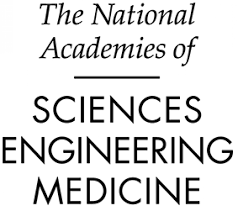
Advances in biotechnology and biomanufacturing are essential for the United States to maintain global leadership as well as for supporting economic and national security interests. Biology provides the basis for innovations from medicine, health, and agriculture, to defense, energy, and
June 30, 2025 Read Full Article
Related articles IATA Releases SAF Matchmaker to Connect Airlines and SAF Suppliers ( International Air Transport Association (IATA))
(Open Access Government) Researchers at Linköping University in Sweden have made significant discoveries in the quest to produce green hydrogen efficiently using sunlight. The team has developed a triple-layered material that enhances the performance of water-splitting reactions, a crucial step in the
June 30, 2025 Read Full Article
Towngas Signs Green Methanol MOUs with Parties Including TLB to Support Hong Kong’s Development as Green Maritime Fuel Centre
(Towngas) The Hong Kong and China Gas Company Limited (Towngas) today (June 25, 2025) participated in the Mainland Hong Kong Green Energy Matchmaking Event at the Central Government Offices, organised by the Commercial Office of the Economic Affairs Department of the
June 30, 2025 Read Full Article
WinGD Wins Methanol Dual-Fuel Engine Order for 30+ Containerships from Taiwanese Player
by Sara Kosmajac (Offshore Energy) Switzerland-based marine power company WinGD has been tapped to supply its X-DF-M dual-fuel methanol and methanol-ready X-engine designs for over 30 boxships to be constructed for a Taiwanese container shipping player. ... The order reportedly follows a booking from
June 30, 2025 Read Full Article
Bio-Feedstock Market Outlook (2025 to 2035)
(Fact.MR) The global bio-feedstock market is expected to reach USD 224.9 billion by 2035, up from USD 115.0 billion in 2024. During the forecast period from 2025 to 2035, the industry is projected to expand at a CAGR of 6.3%, as the market emerges to meet the growing demand for
June 30, 2025 Read Full Article
Can Dairy Lead the Way? Sustainability Action Plans for Methane Reduction --- July 22, 2025 --- ONLINE

Food companies have a powerful opportunity to address planet-warming methane emissions from dairy production in their supply chains to help achieve greenhouse gas reduction, build resilience in their operations and supply chains and enhance business value. Methane is about 80x more
June 30, 2025 Read Full Article
Work With Us: Energy Technology Proving Ground - Biomass and Waste Processing Dr. Lynn Wendt Webinar Presentation
(U.S. Department of Energy) Dr. Lynn Wendt serves as the Laboratory Relationship Manager to the U.S. Department of Energy’s Bioenergy Technologies Office (BETO). Dr. Wendt is also a senior research scientist in the Energy and Environment Science and Technology Directorate at
June 30, 2025 Read Full Article
GTI Energy Future Focused: Navigating What’s Next for Marine Fuels --- July 16, 2026 --- ONLINE
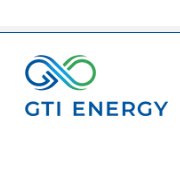
With the International Maritime Organization’s (IMO) MEPC 83 meeting signaling a shift in future fuel standards, shipowners, fuel suppliers, and maritime stakeholders must navigate uncharted waters shaped by evolving regulations. In this session, we will examine what the new policy
June 28, 2025 Read Full Article
California Repeals Diesel Locomotive Phase-out Rule
by Alex Nieves (Politico Pro) The California Air Resources Board announced plans to revoke the rule in January. -- California air regulators repealed a state rule Thursday that would have mandated rail operators phase out the diesel locomotives that traverse the
June 27, 2025 Read Full Article
FSMA Preventive Controls for Animal Food Training Course --- August 26-28, 2025 --- Sioux Falls, SD
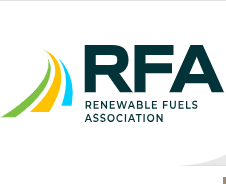
The Renewable Fuels Association is offering a 2½-day, in-person training course in Sioux Falls, South Dakota using standardized curriculum developed by the Food Safety Preventive Controls Alliance (FSPCA). Participants will receive Certificates of Completion following 20 hours of training by
June 27, 2025 Read Full Article
Federal Court Strikes Down EPA Fuel Economy Rule in Victory for Ethanol and Scientific Integrity
(National Sorghum Producers) The U.S. Court of Appeals for the Fifth Circuit ruled this week in favor of Texas Corn Producers, Texas Sorghum Producers, and National Sorghum Producers, vacating a 2024 Environmental Protection Agency (EPA) rule that unfairly penalized ethanol-containing fuels in federal
June 27, 2025 Read Full Article
Lufthansa Group and Airbus Collaborate for Business Travel with SAF
(Lufthansa Group) Since June 1, the Lufthansa Group “Sustainable Corporate Value Fare” has been used by Airbus for all Lufthansa flights within Germany for its employees; Fare for business customers enables proportional offsetting of calculated CO2 emissions through the use of SAF; Lufthansa
June 27, 2025 Read Full Article
What Is Holding Back the Bioeconomy? In Conversation with Boston Bioprocess CEO Dr. Michael Tai
by Elaine Watson (Ag Funder News) While significant progress has been made in recent years to optimize microbial strains and drive efficiency in biomanufacturing, a disconnect between upstream and downstream work continues to hold back progress, claims Boston Bioprocess cofounder Dr. Michael Tai. Founded
June 27, 2025 Read Full Article
Oxford Researchers Find Planting Trees in Kenya Has Better Climate Results than DAC
by Meghan Sapp (Biofuels Digest) n the UK, from direct air capture to farming smarter and reforesting the tropics, carbon drawdown is no longer the stuff of academic journals or green tech expos, it’s the frontline of our collective climate response. But which
June 26, 2025 Read Full Article
FutureFuel Idles Biodiesel Production Amidst Regulatory Uncertainty, Shifts Full Focus to Specialty Chemicals Growth
(FutureFuel) FutureFuel Corp. (NYSE: FF) (“FutureFuel” or the “Company”), a manufacturer of custom and performance chemicals and biofuels, today announced its decision to temporarily idle biodiesel production upon completion of its remaining contractual obligations, anticipated to occur by the end of
June 26, 2025 Read Full Article
Brazil Raises Biofuel Levels, Sees Gasoline Self-sufficiency
by Oliver Griffin and Ricardo Brito (Reuters) Ethanol blend raised 3% to 30%, biodiesel up 1% to 15% from August; Brazil to be gasoline self-sufficient for first time in 15 years - minister; Industry lobbies cheer move Brazil's National Energy Policy Council (CNPE) on Wednesday
June 26, 2025 Read Full Article
14th Annual OPIS LCFS & Carbon Markets Workshop --- January 13-15, 2025 --- San Diego, CA
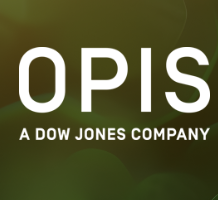
Join us for the 14th Annual OPIS LCFS & Carbon Workshop, where thought leaders, industry pioneers, and policymakers converge to explore the ever-evolving landscape of carbon markets, clean fuel standards, and sustainable energy solutions. This industry leading 2.5-day workshop delivers a dynamic
June 25, 2025 Read Full Article
Sustainable Aviation Fuel Is Key to America’s Energy Dominance Agenda
by Michael McAdams (Advanced Biofuels Association/Real Clear Energy) Sustainable Aviation Fuel (SAF) has moved from the margins of energy policy to the forefront of America’s energy future. Once viewed as a long-shot innovation, SAF is now a commercially viable, rapidly scaling
June 25, 2025 Read Full Article
Democrats Are Taking Aim at One of California’s Signature Climate Policies
by Alex Nieves, Debra Kahn, Camille von Kaenel (Politico Pro Climatewire) State lawmakers are targeting California's climate and pollution regulations in the name of gas prices. -- President Donald Trump is threatening California's marquee carbon-trading program. But it's in-state Democrats who are
June 25, 2025 Read Full Article
Amid Middle East Tensions, RFA Urges President Trump to Remove E15 Barriers
(Renewable Fuels Association) Allowing E15 in existing infrastructure would help reduce volatility, lower pump prices -- As tensions in the Middle East create uncertainty and volatility in global fuel markets, the Renewable Fuels Association is urging President Trump to move quickly to
June 25, 2025 Read Full Article
The Digest’s 2025 Multi-Slide Guide to Carbon Recycling International’s Advanced Methanol Production
by Jim Lane (Biofuels Digest) Carbon Recycling International (CRI) operates the first certified e-fuel plant and the largest, most efficient CO2 to Methanol plant, producing over 210,000 tonnes. Their patented, flexible reactor design handles diverse CO2 and hydrogen feedstocks. Methanol is
June 25, 2025 Read Full Article
Japanese Green Tech Firms Eye Coconut-Based Fertilizer, SAF Ventures with PCA
(Philippine Coconut Authority) Japanese conglomerate Swung Inc. held a follow-up meeting with the Philippine Coconut Authority (PCA), pushing forward discussions on their patented organic fertilizer technology and potential ventures into Sustainable Aviation Fuel (SAF) production from coconut-derived products. The high-level meeting,
June 25, 2025 Read Full Article
3Degrees Strengthens European Biomethane Solutions with ISCC EU Certification
(3Degrees/Business Wire) o The International Sustainability and Carbon Certification (ISCC) system is a leading certification for compliance with the European Union’s sustainability standards. o The ISCC EU certification reinforces 3Degrees’ longstanding expertise and commitment to decarbonisation and traceability in the
June 25, 2025 Read Full Article
The Digest’s 2025 Multi-Slide Guide to Carbon Recycling International’s Scalable Fuel Solutions
by Jim Lane (Biofuels Digest) Carbon Recycling International (CRI) offers Emissions-to-Liquids (ETL) technology that converts CO2 and H2 into practical, low-carbon fuels like methanol. Methanol demand is projected to grow from 97MT (2020) to over 500MT by 2050, driven by shipping
June 25, 2025 Read Full Article
GOP Attorneys General Want Legal Immunity for Fossil Fuel Industry
by Lesley Clark (Politico Pro Climatewire) Red states are urging the Trump administration to take steps to quash lawsuits that seek to hold the oil and gas industry accountable for climate change. -- A coalition of Republican state attorneys general is urging
June 25, 2025 Read Full Article
High Noon for Energy Supply at the Strait of Hormuz Parts 1 and 2
by Jim Lane (Biofuels Digest) ... Renewable fuels aren’t perfect. They’re not glamorous. But they’re here. Domestic. Deployable. Real. And in a moment of where resilience counts, they may be the only thing standing between us and a fuel system too brittle to
June 24, 2025 Read Full Article
Bureau Veritas Calls for Systemic Industry Change to Support a Sustainable Blue Economy
(Bureau Veritas) From green finance to cross-sector collaboration, Matthieu de Tugny - Bureau Veritas Executive Vice-President, leading Marine & Offshore, says shipping needs a radically different approach to ensure continued protection of the natural environment and achieve its decarbonization and sustainability
June 24, 2025 Read Full Article
A Carbon Tariff Is the Right Way to Confront China on Trade
by Ely Sandler and Daniel Schrag (Washington Post) President Donald Trump’s tariffs are in limbo, struck down by one federal court and temporarily reinstated by another. Congress, with its slim Republican majority, seems unlikely to enact them into law. Beyond the
June 24, 2025 Read Full Article
The Digest’s 2025 Multi-Slide Guide to Anellotech
by Jim Lane (Biofuels Digest) Anellotech presents Plas-TCat, a novel fluid bed catalytic cracking technology that performs a single-step conversion of mixed plastic waste into high-value chemicals like benzene, toluene, xylene, ethylene, and propylene. A key innovation is its feedstock flexibility,
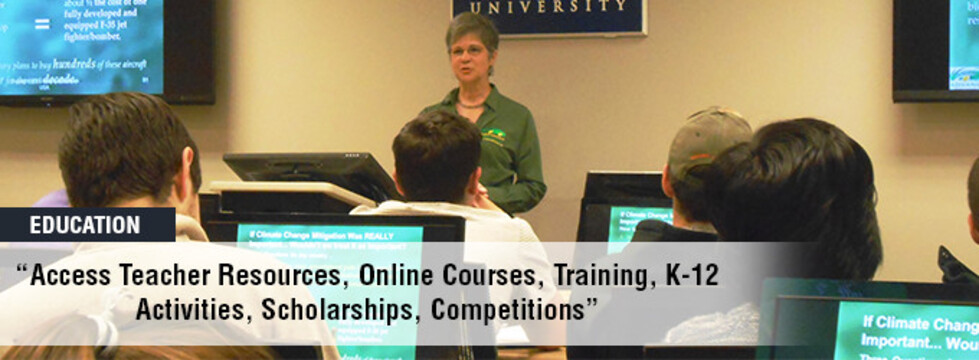
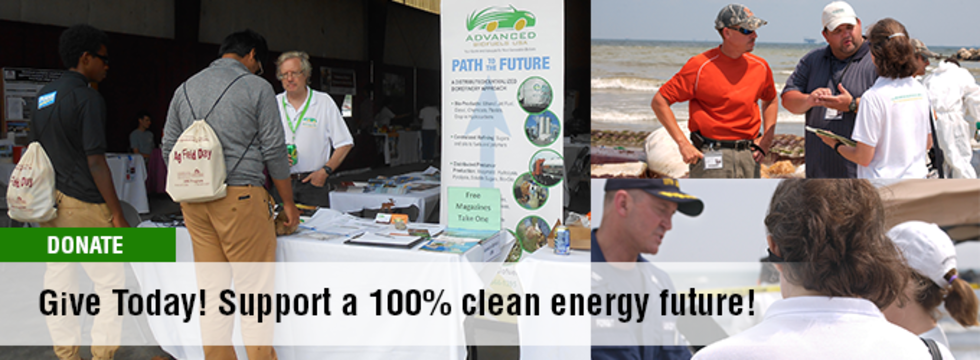
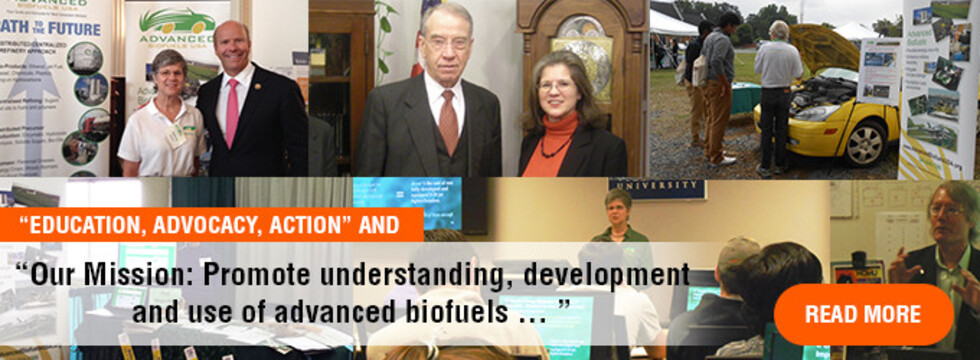
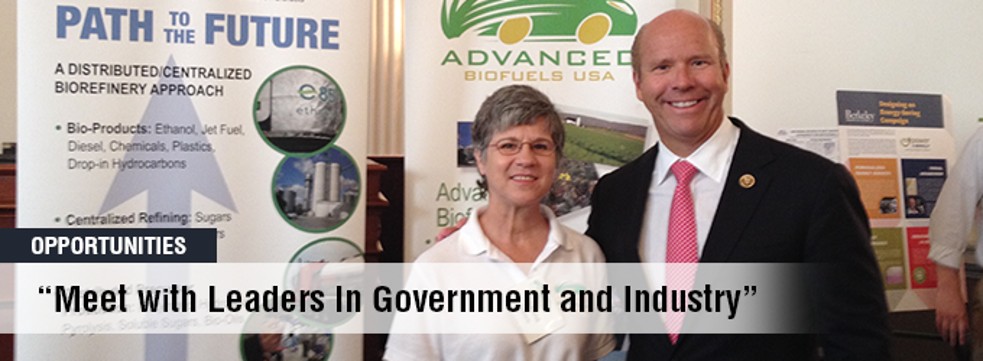
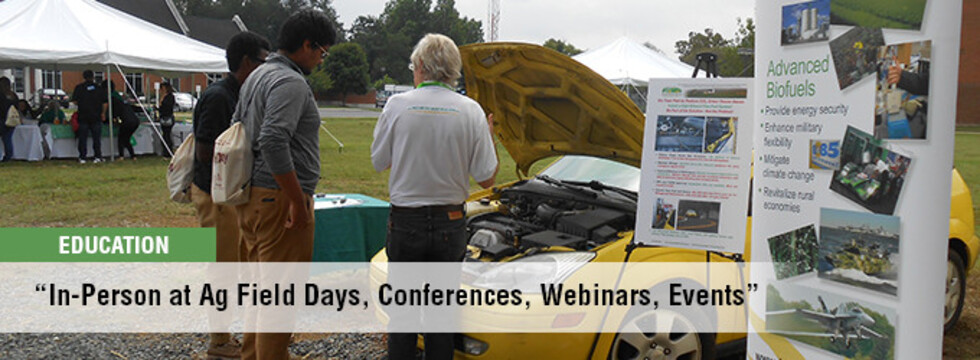
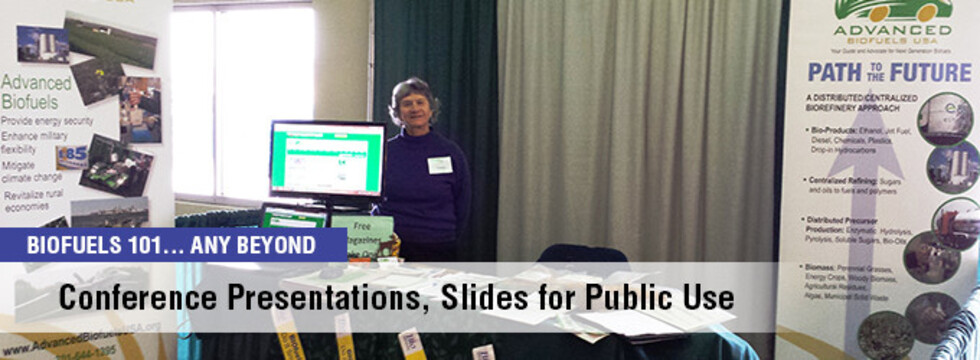


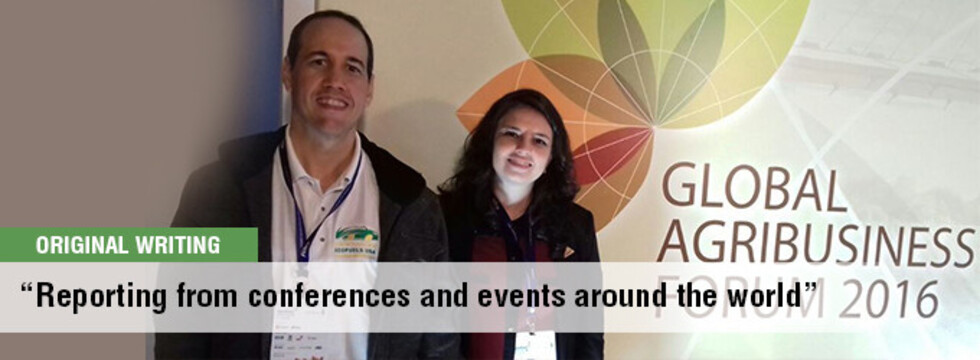
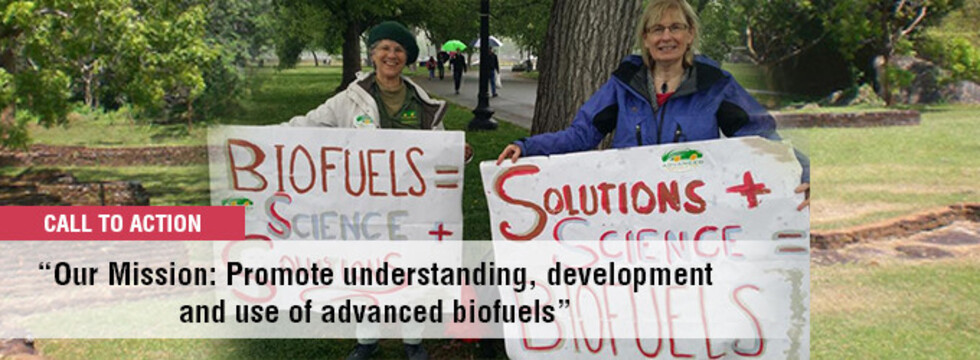
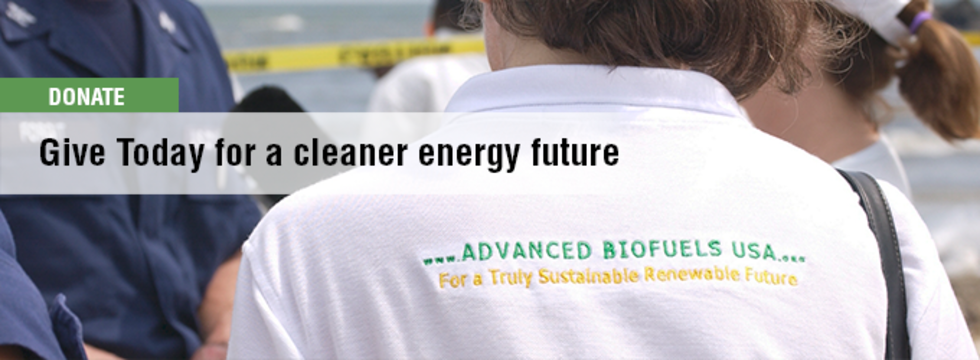
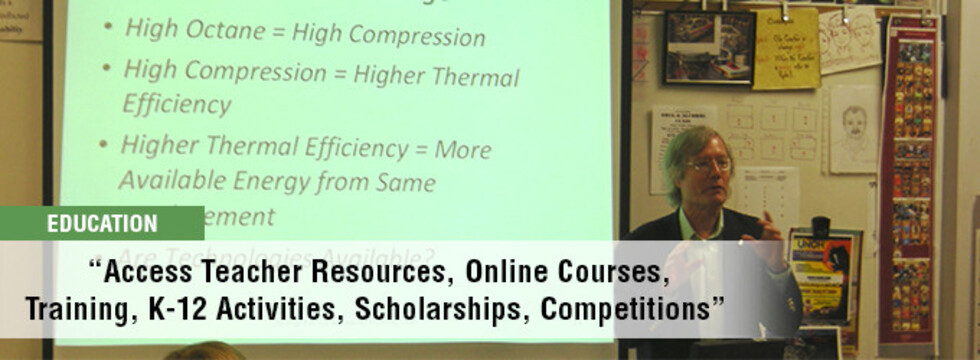
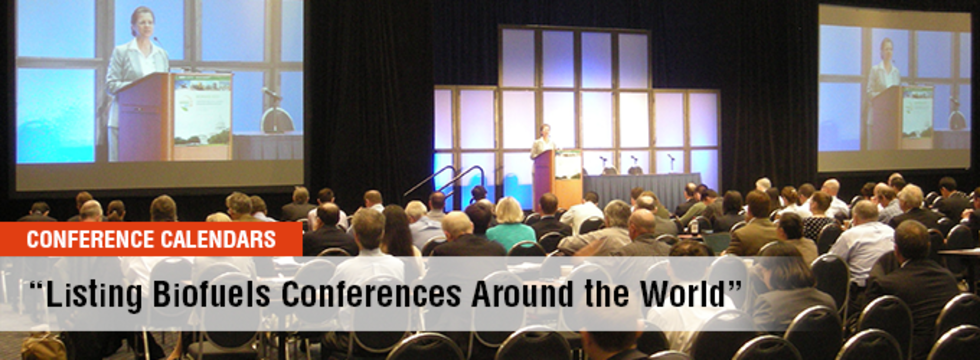
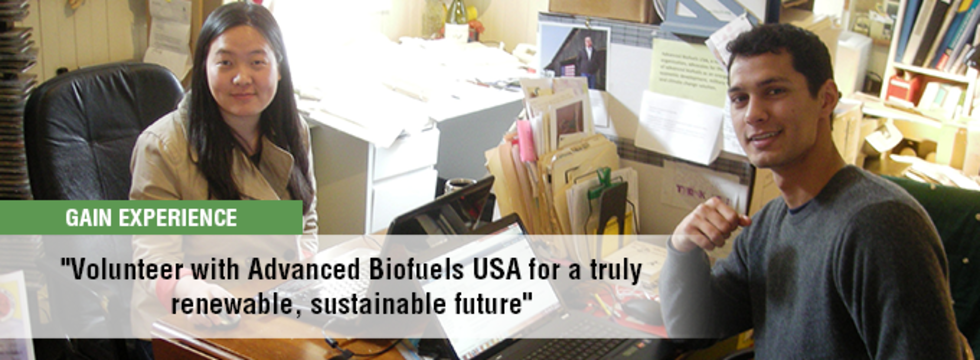
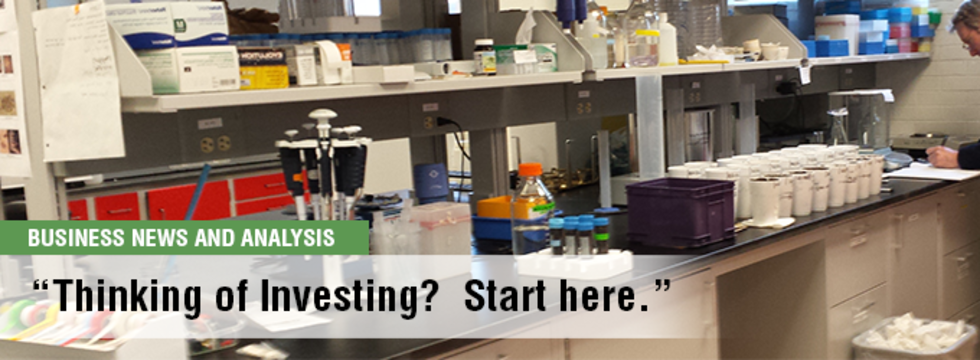






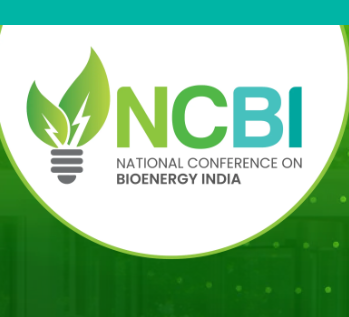

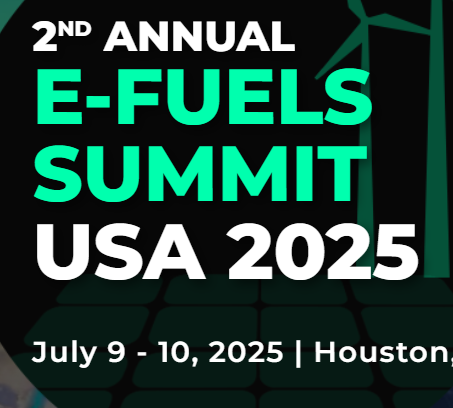


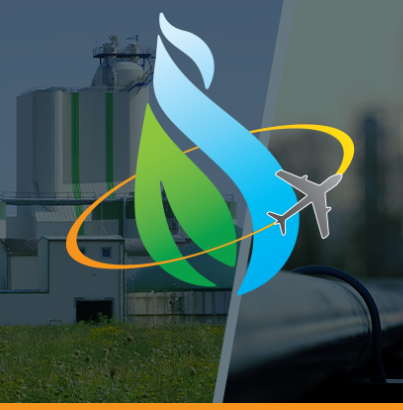
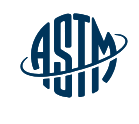
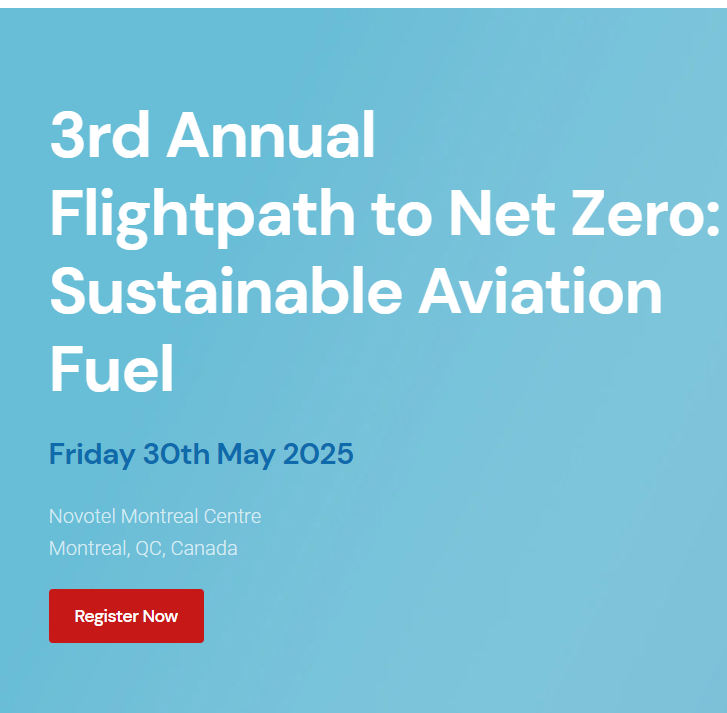
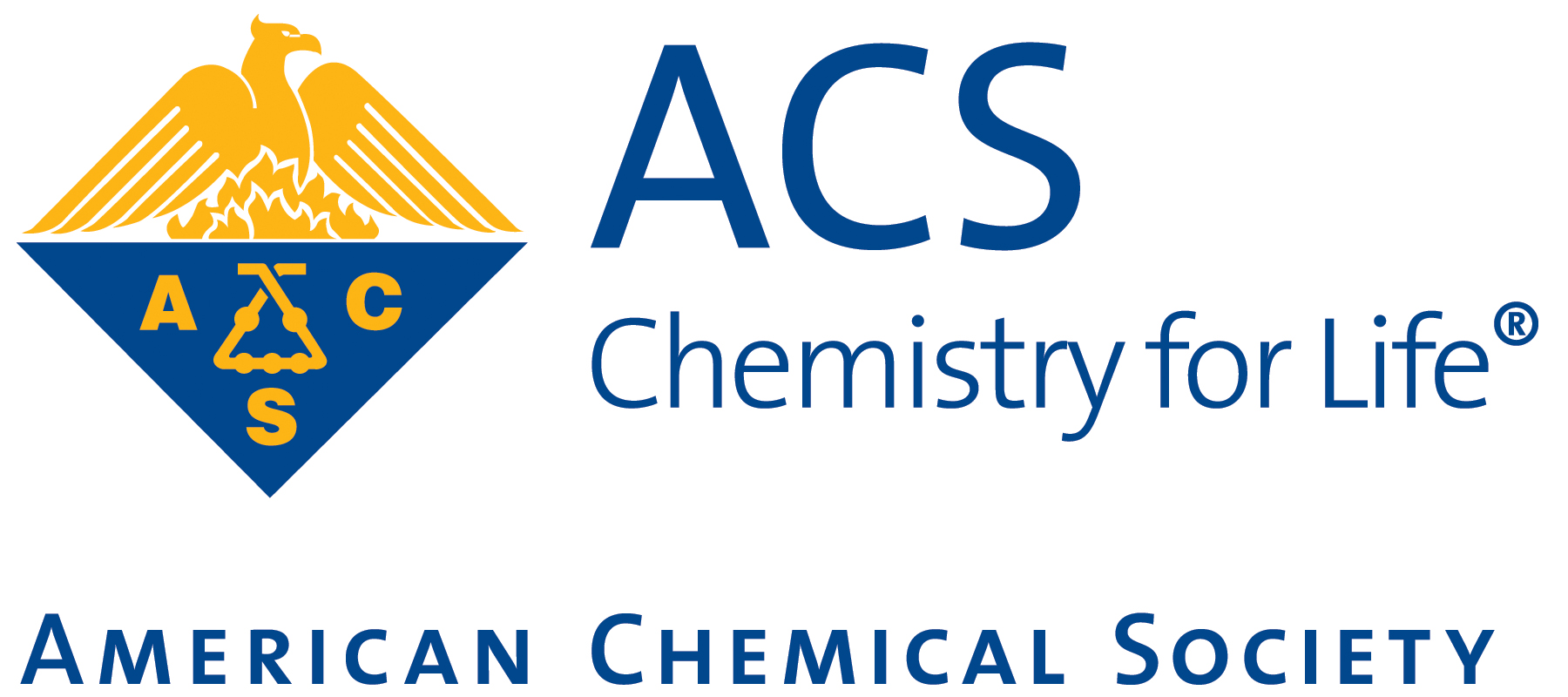

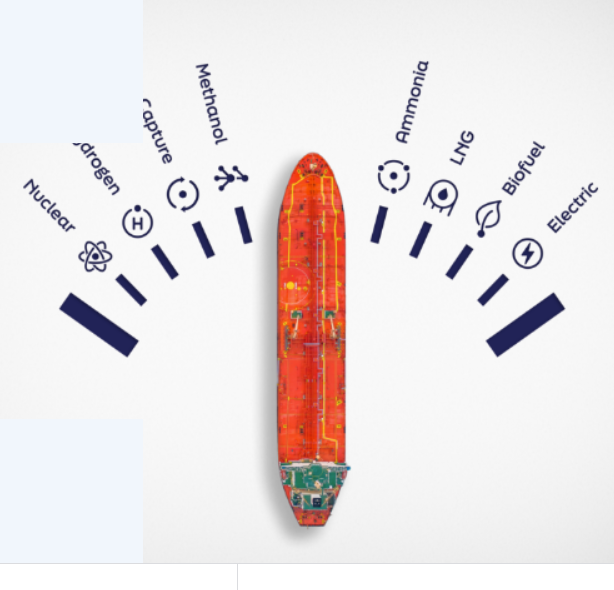




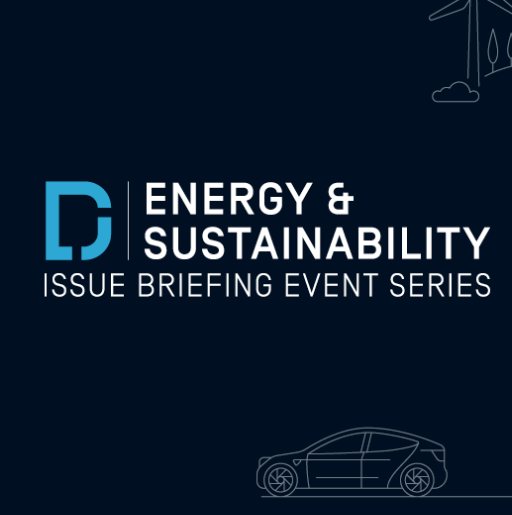
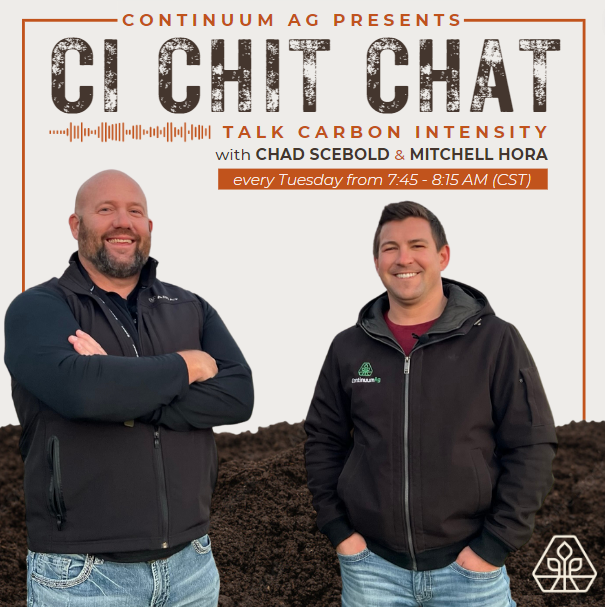





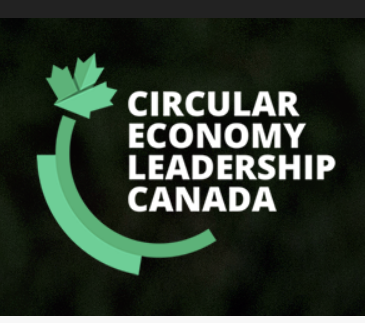
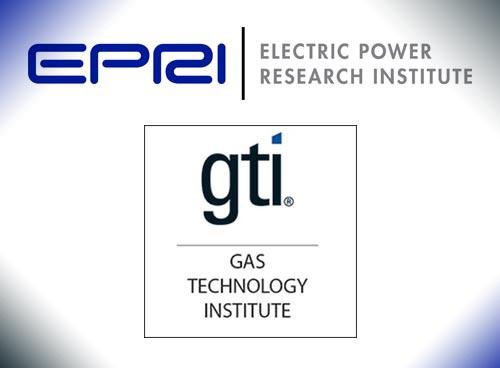
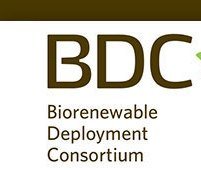
.jpg)




